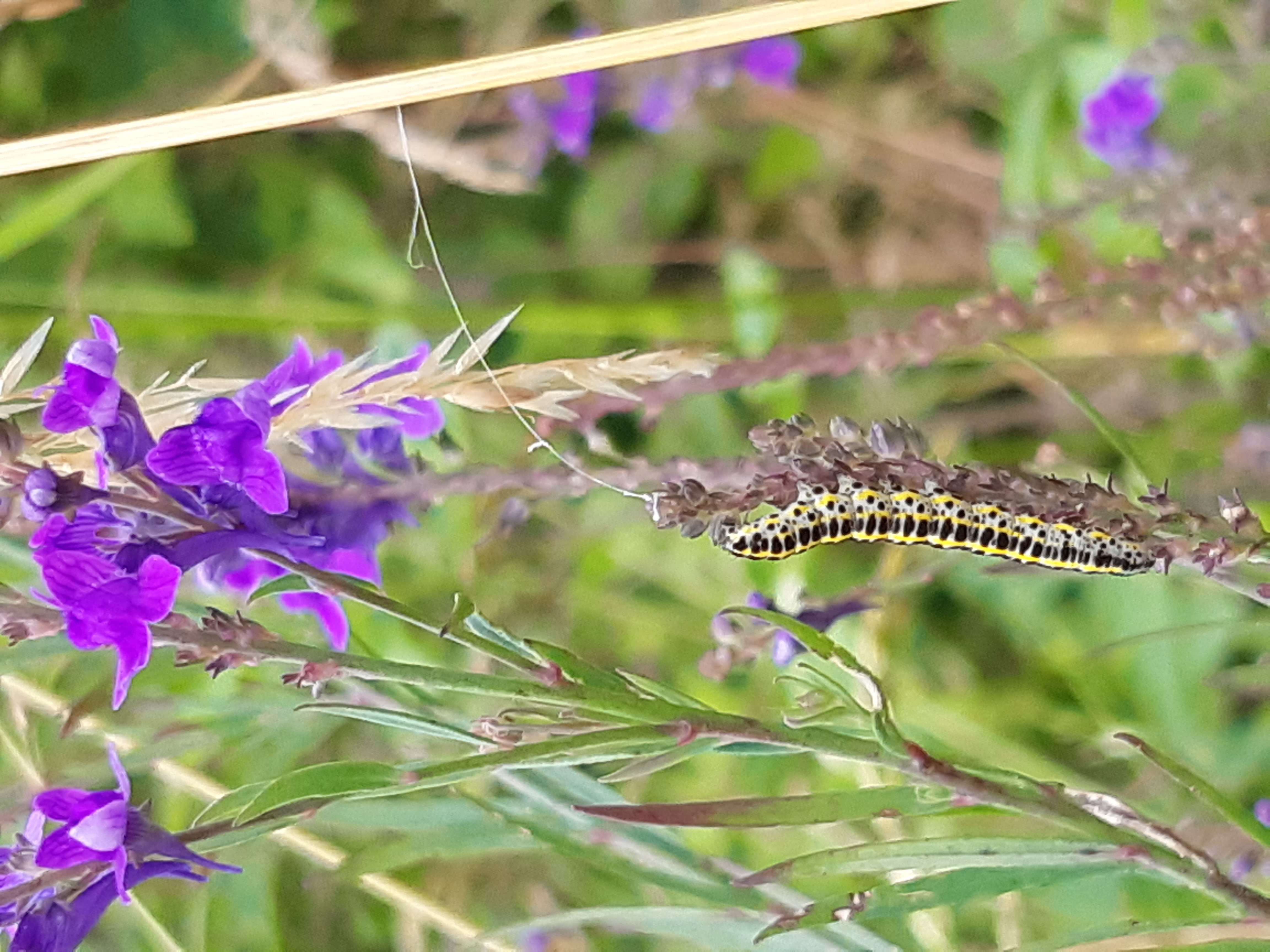
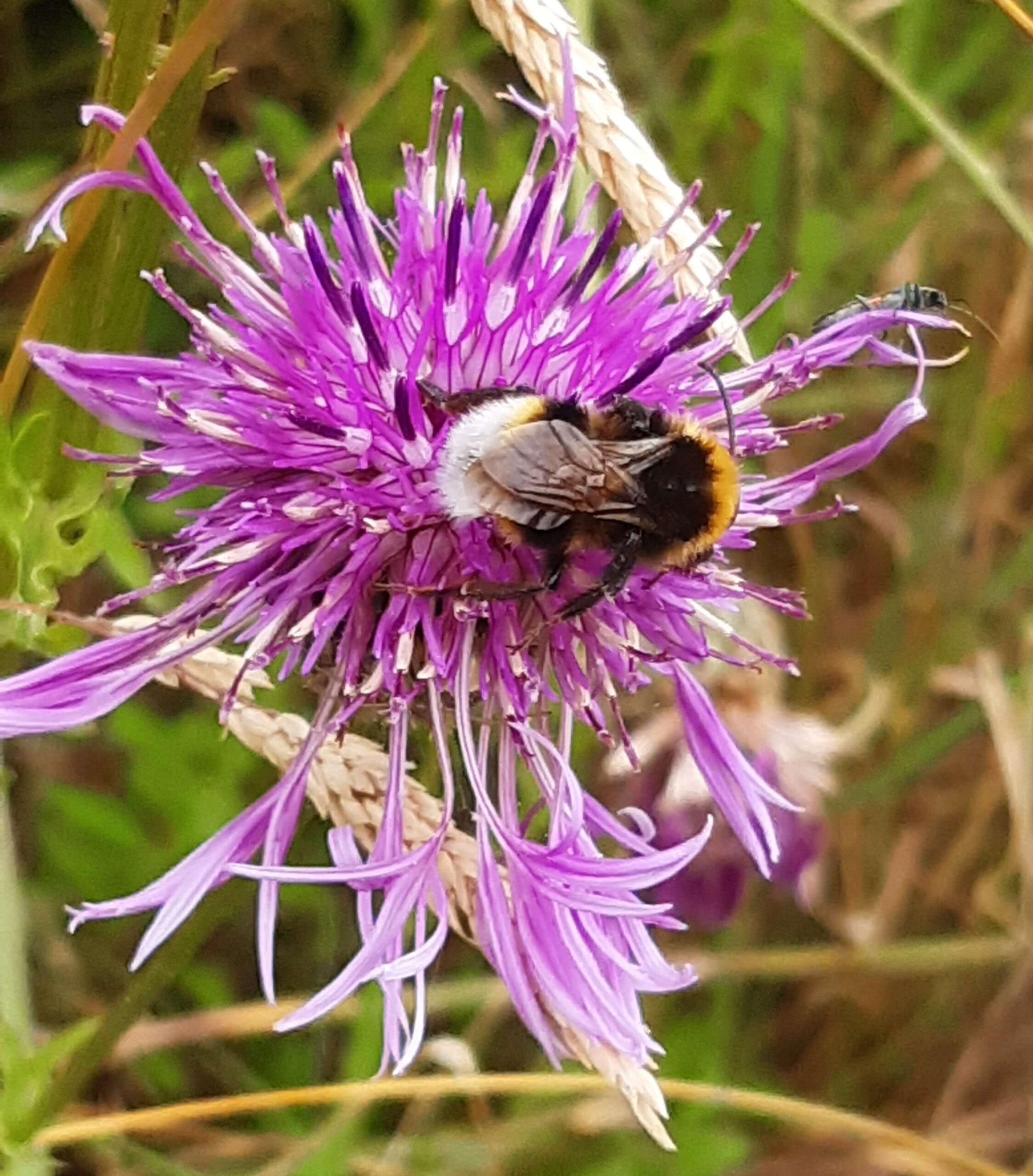
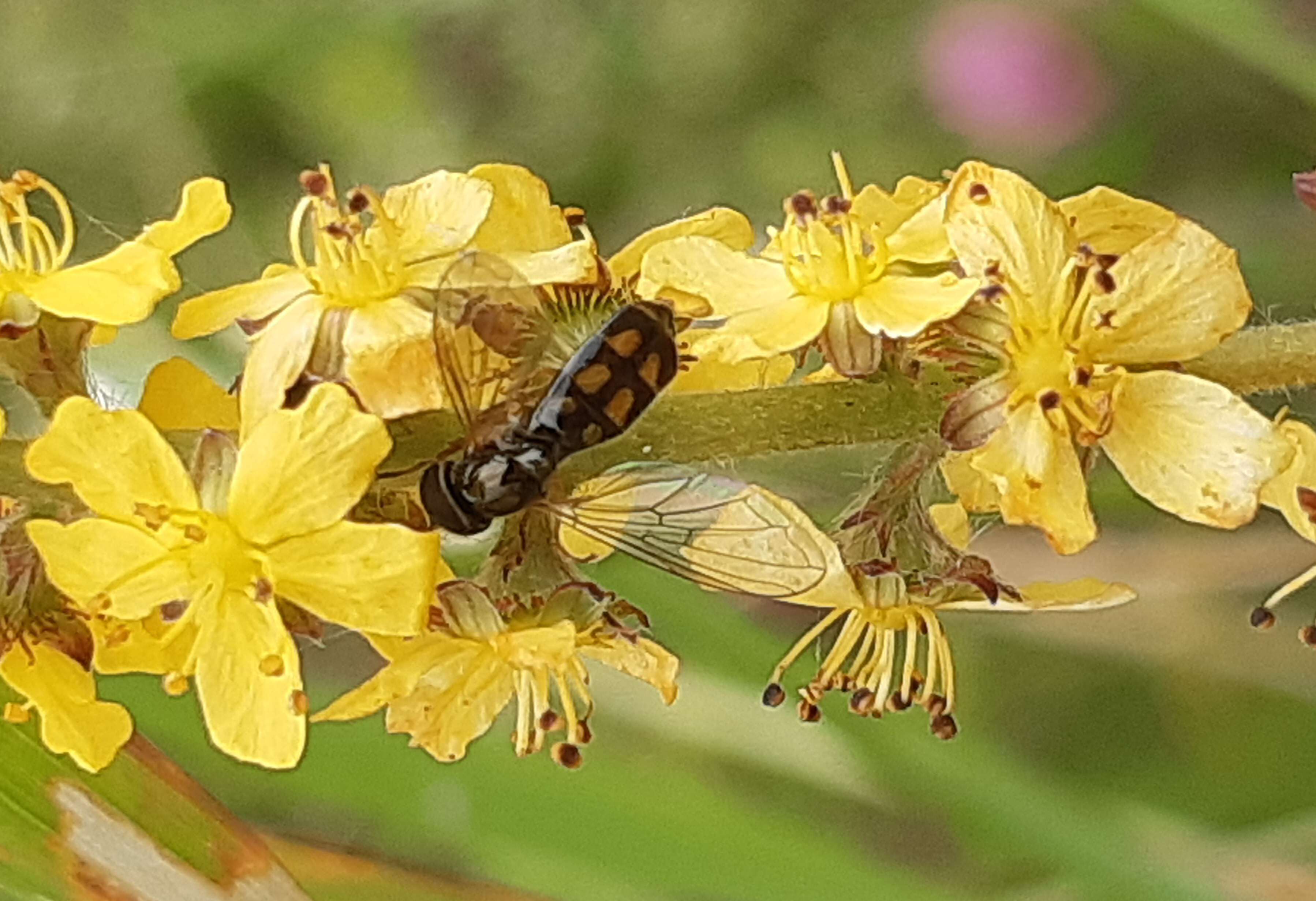
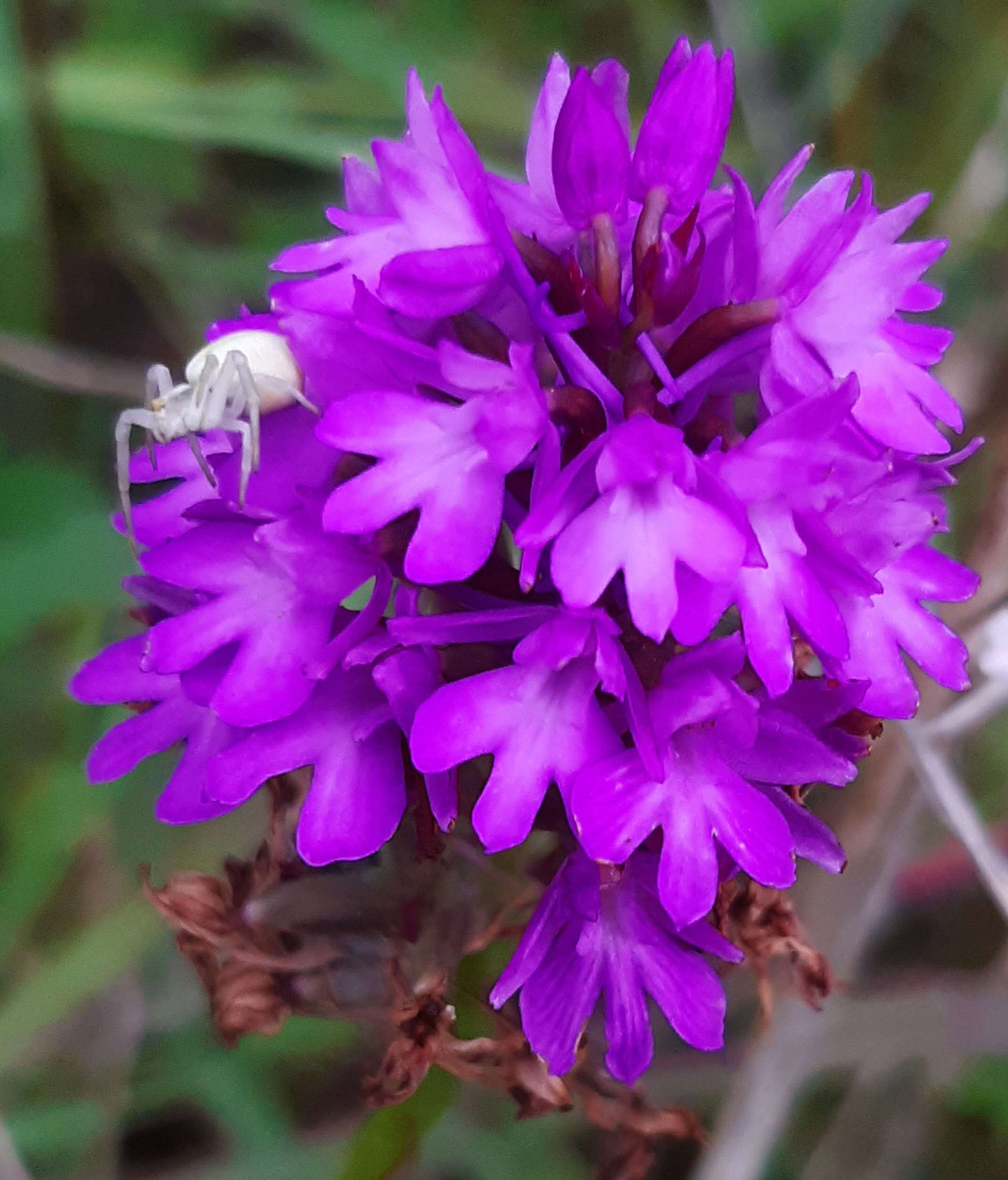
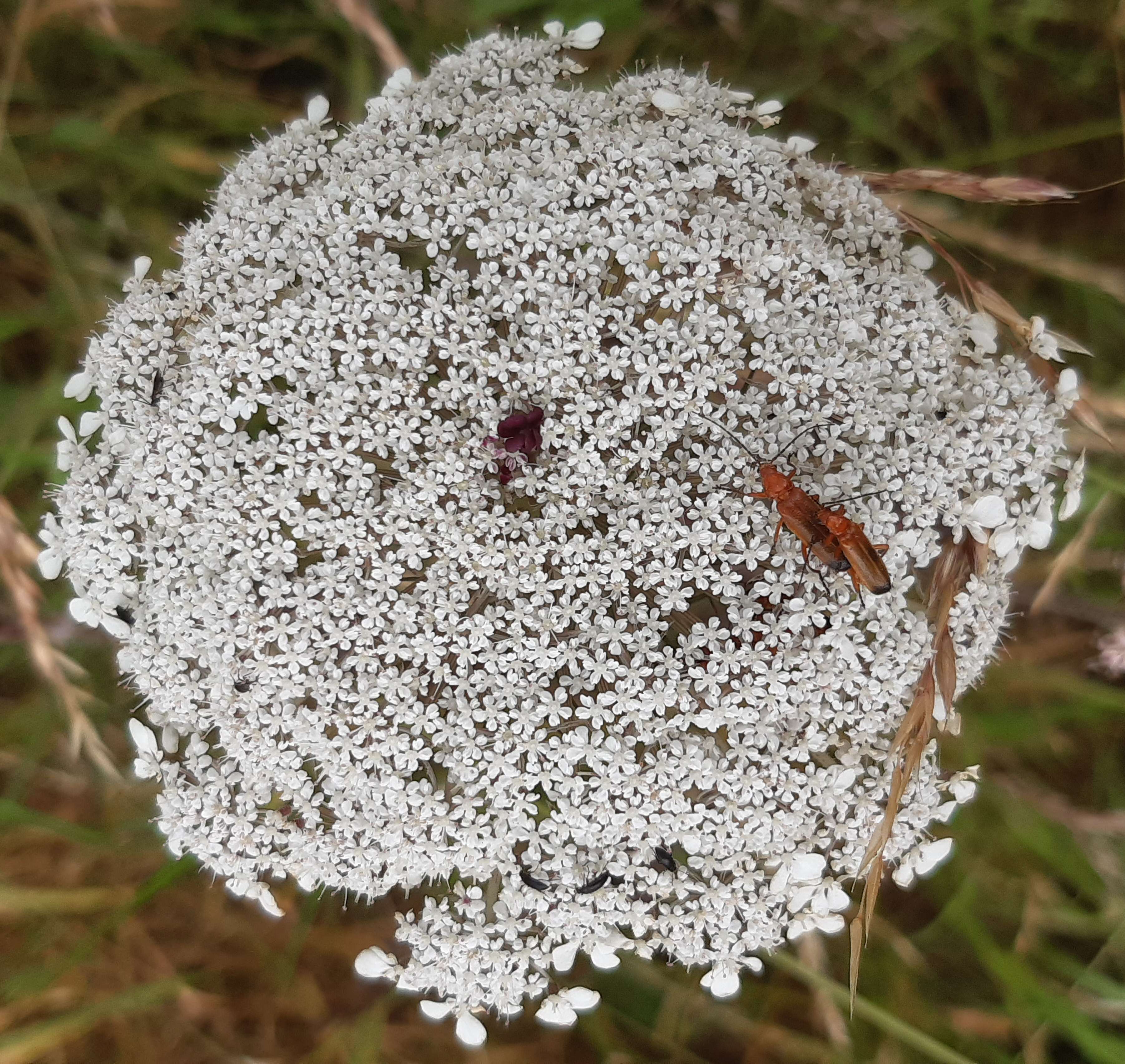
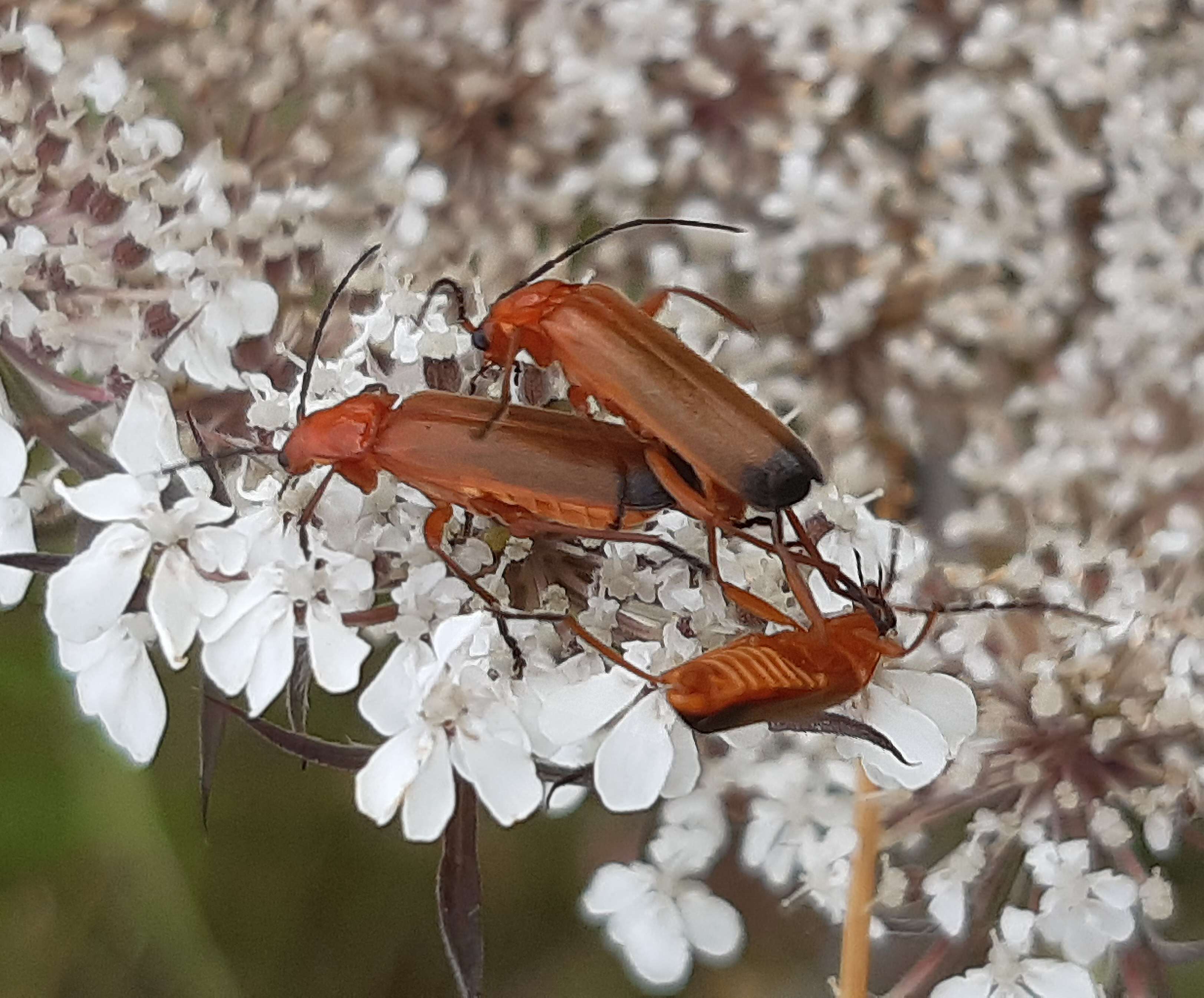
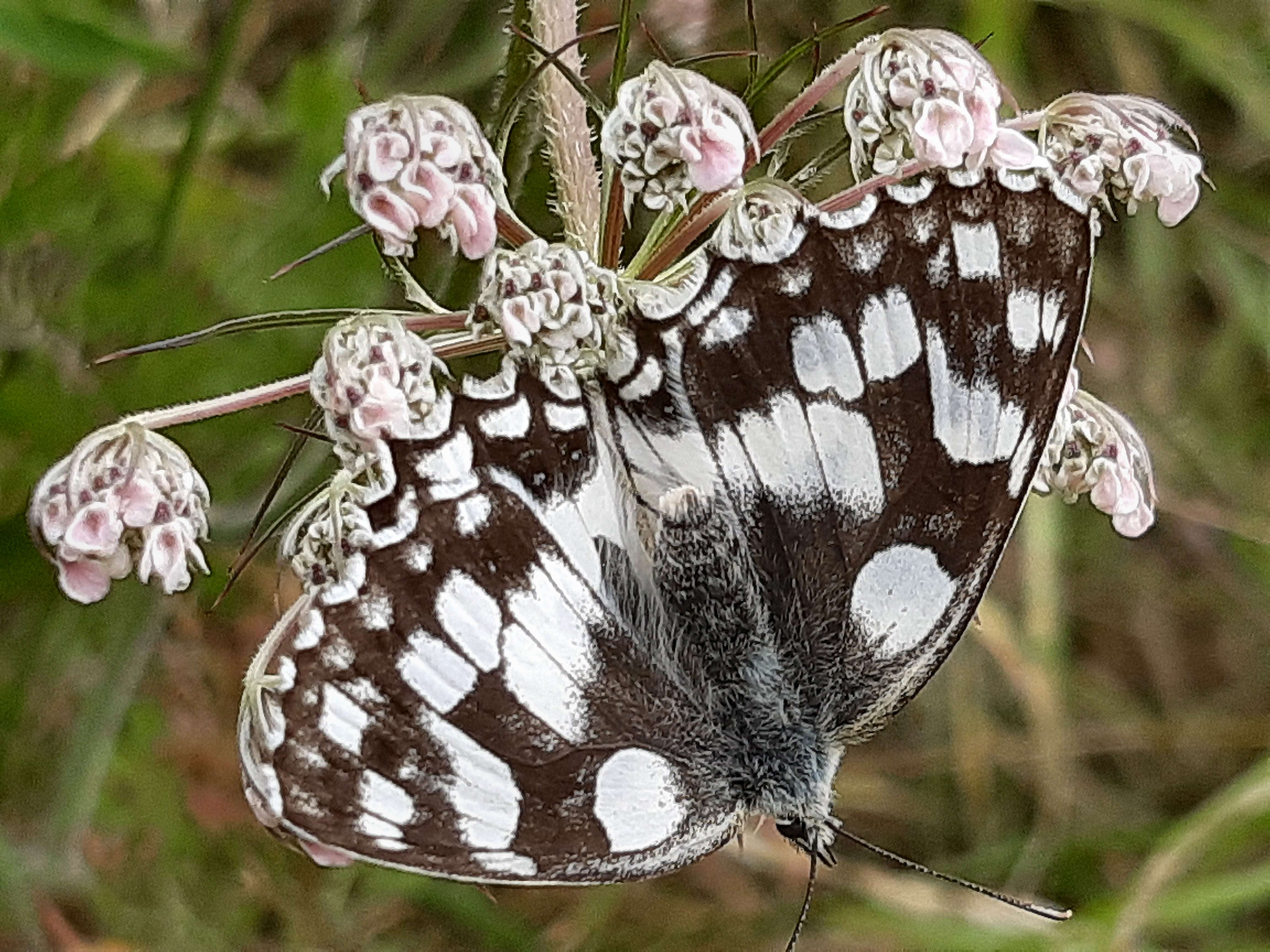
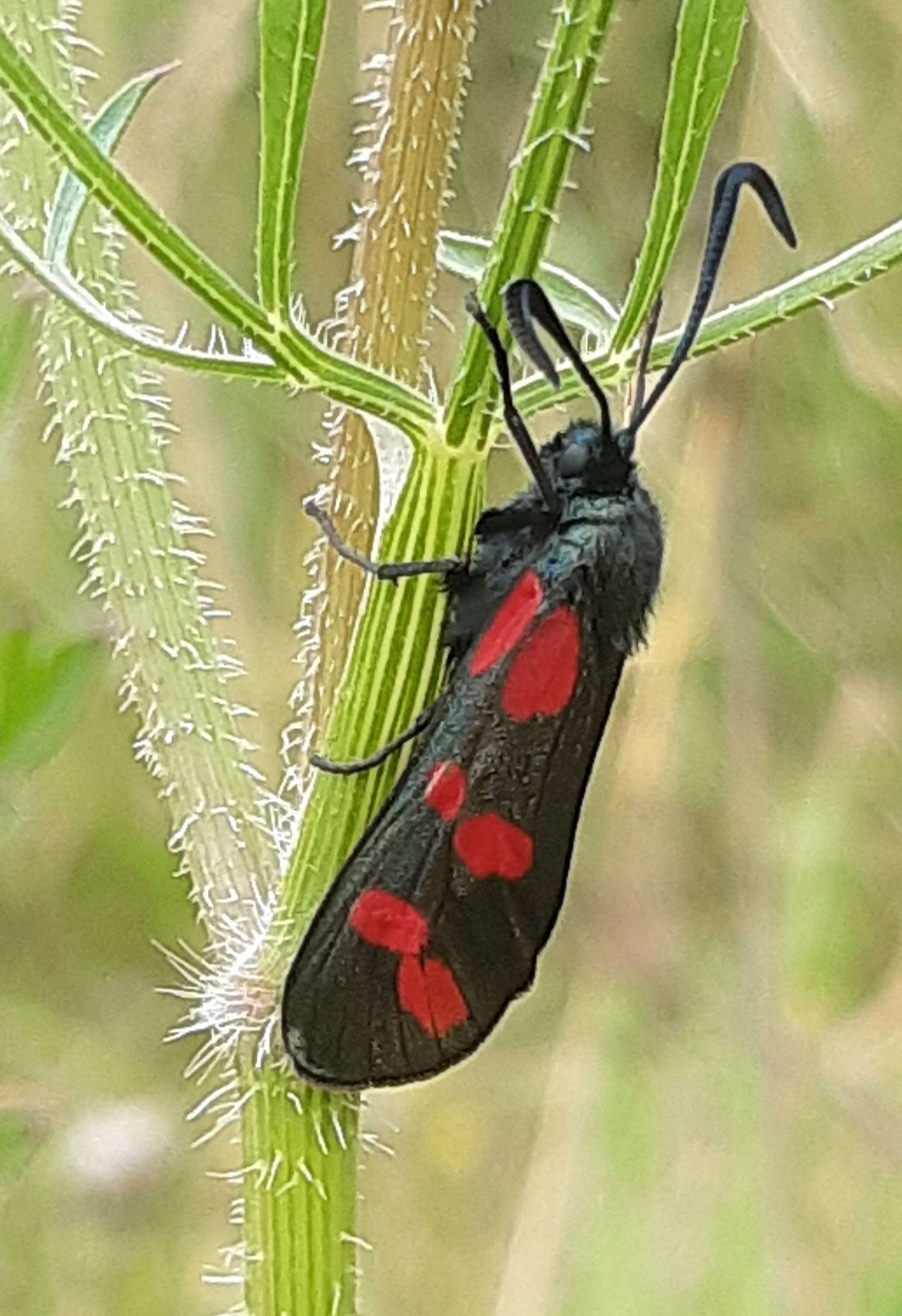

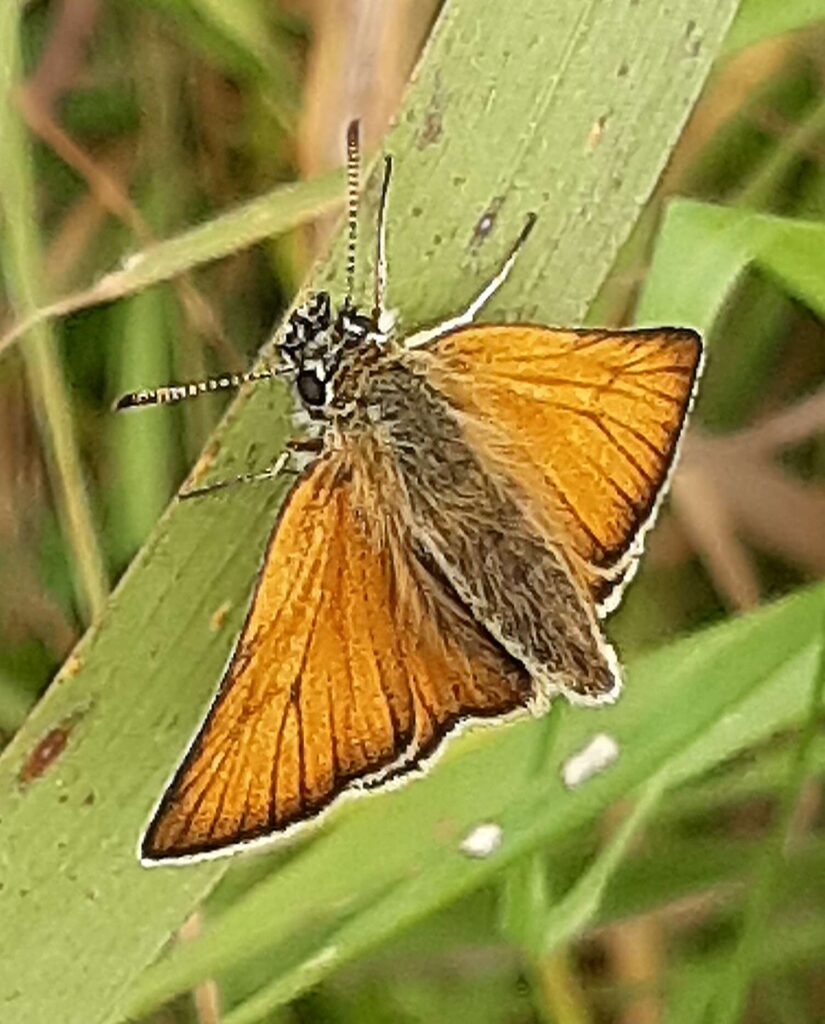
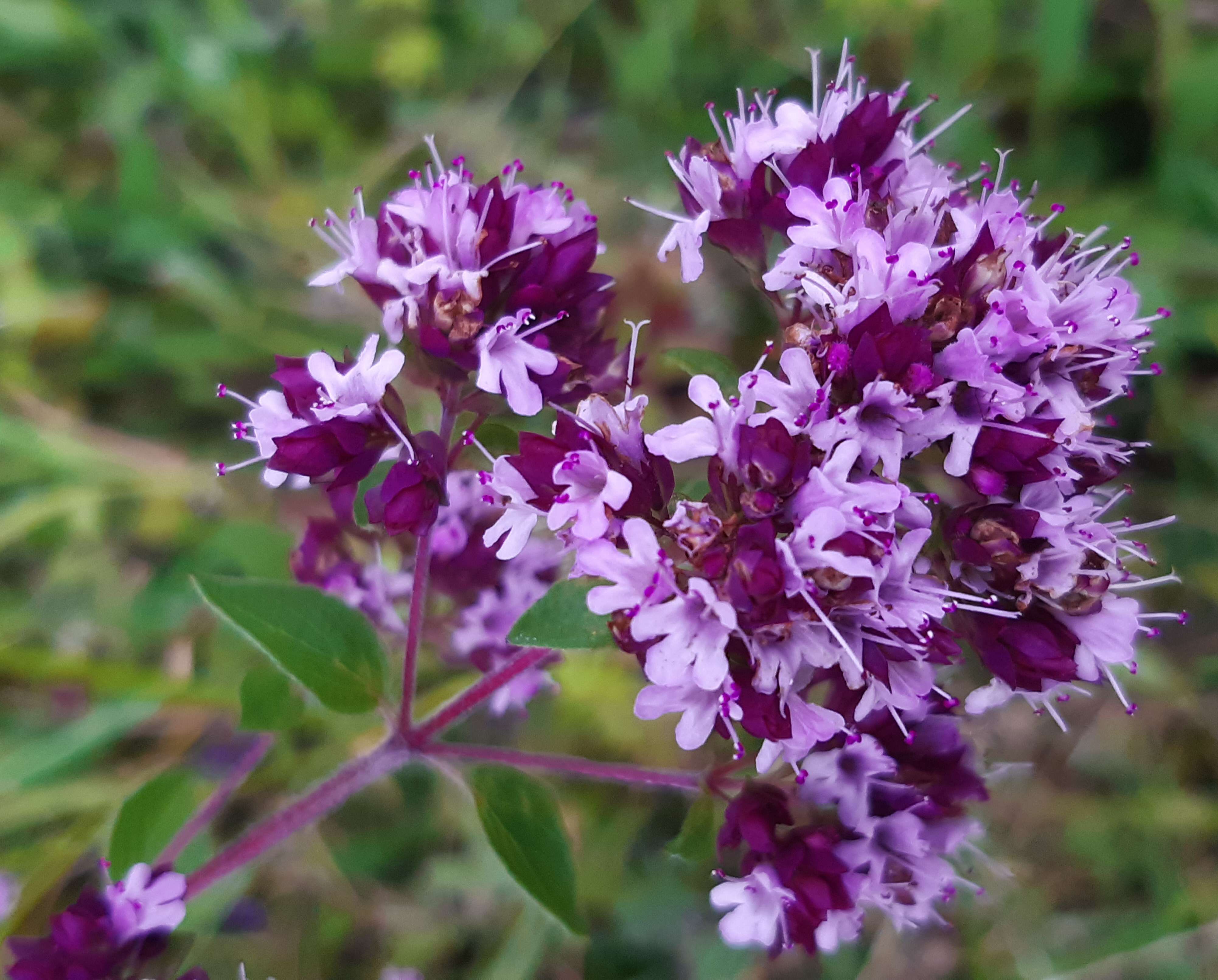
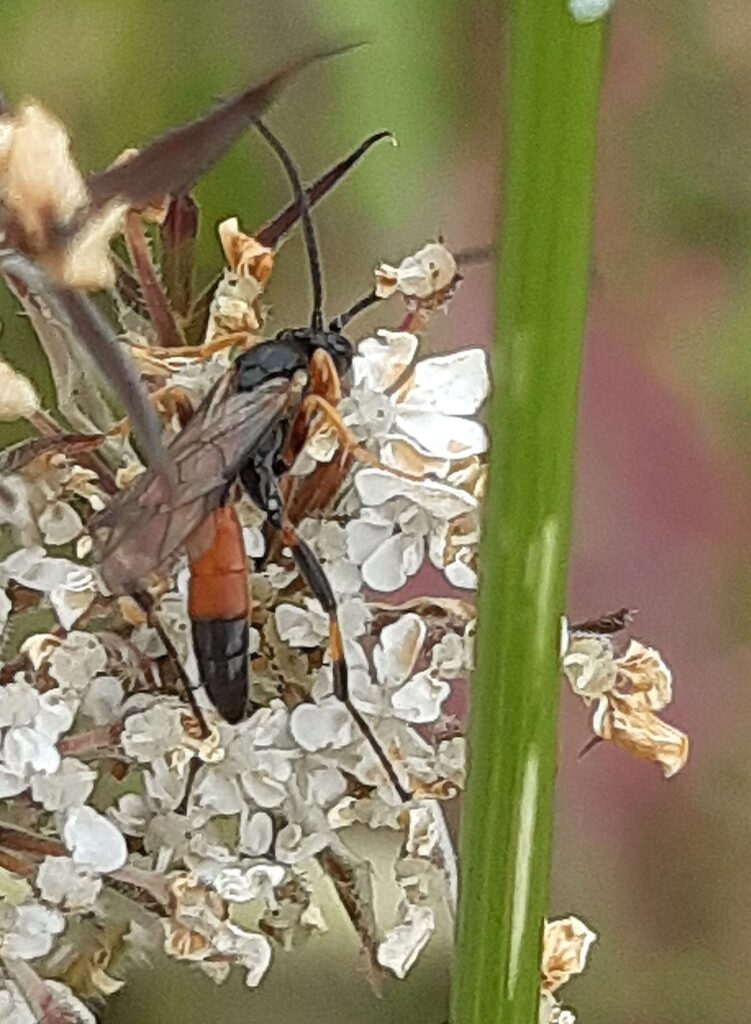
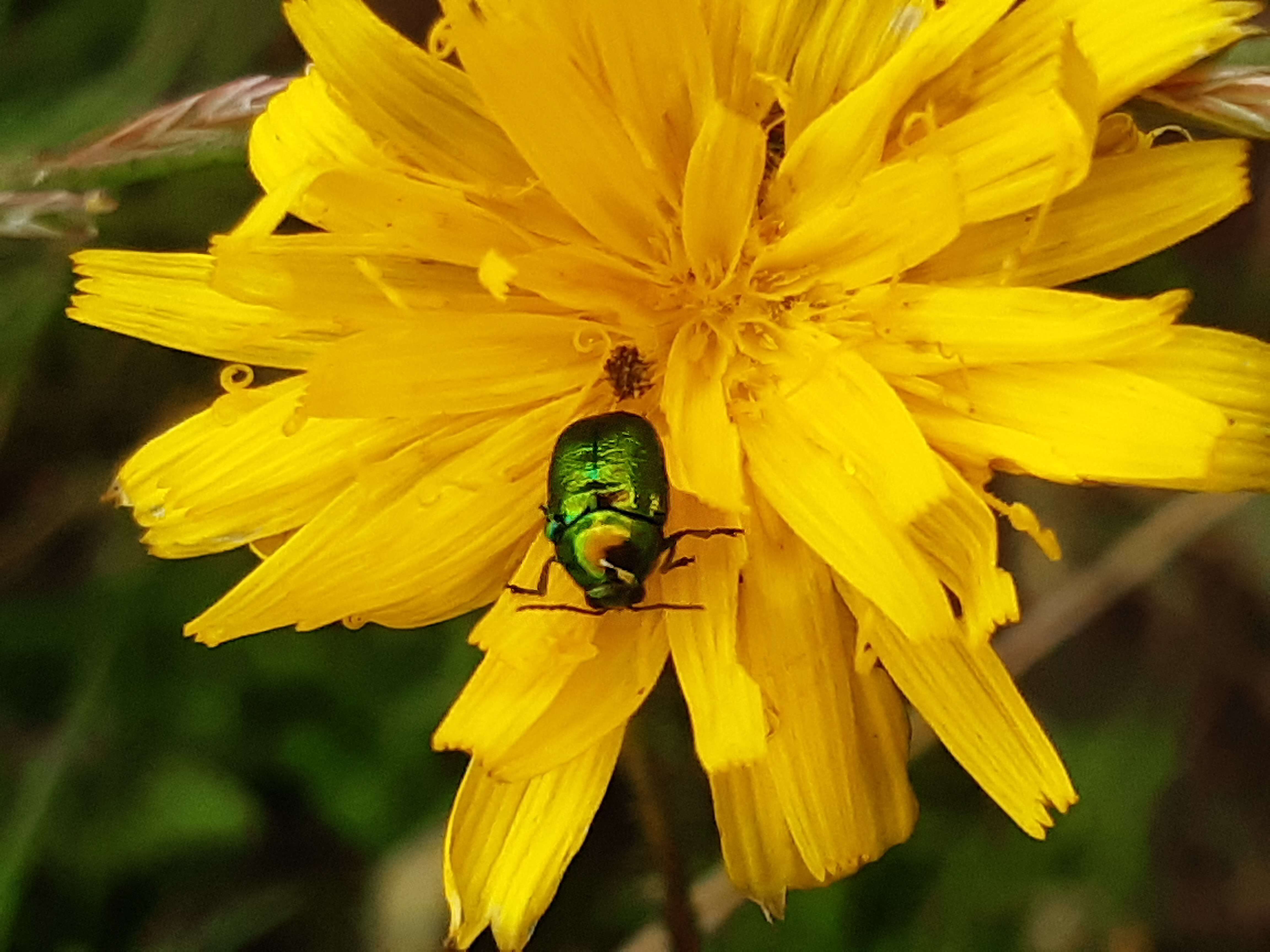
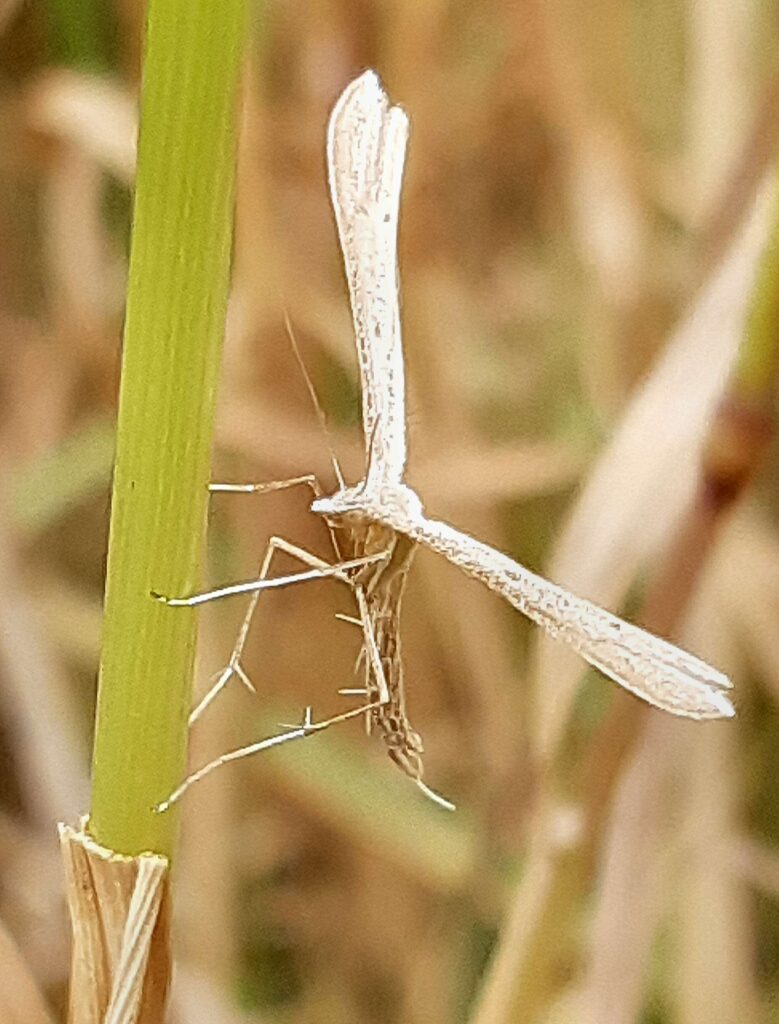
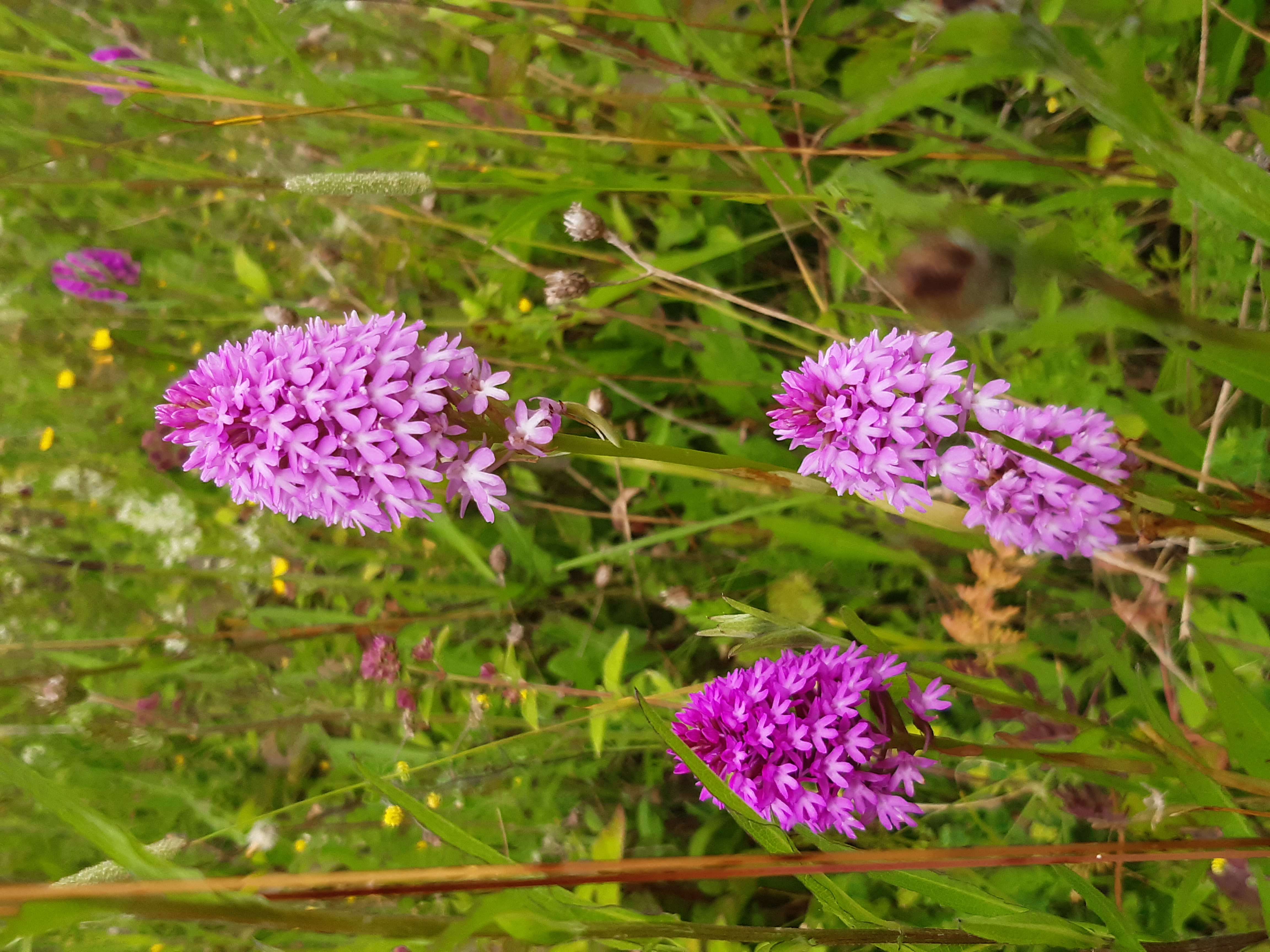
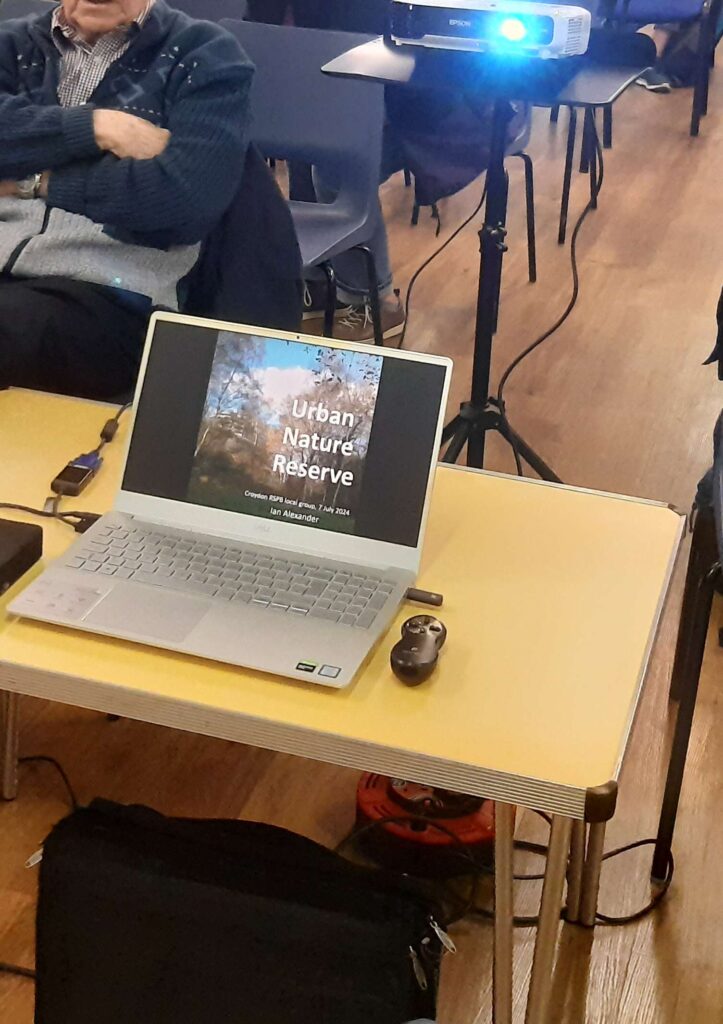
















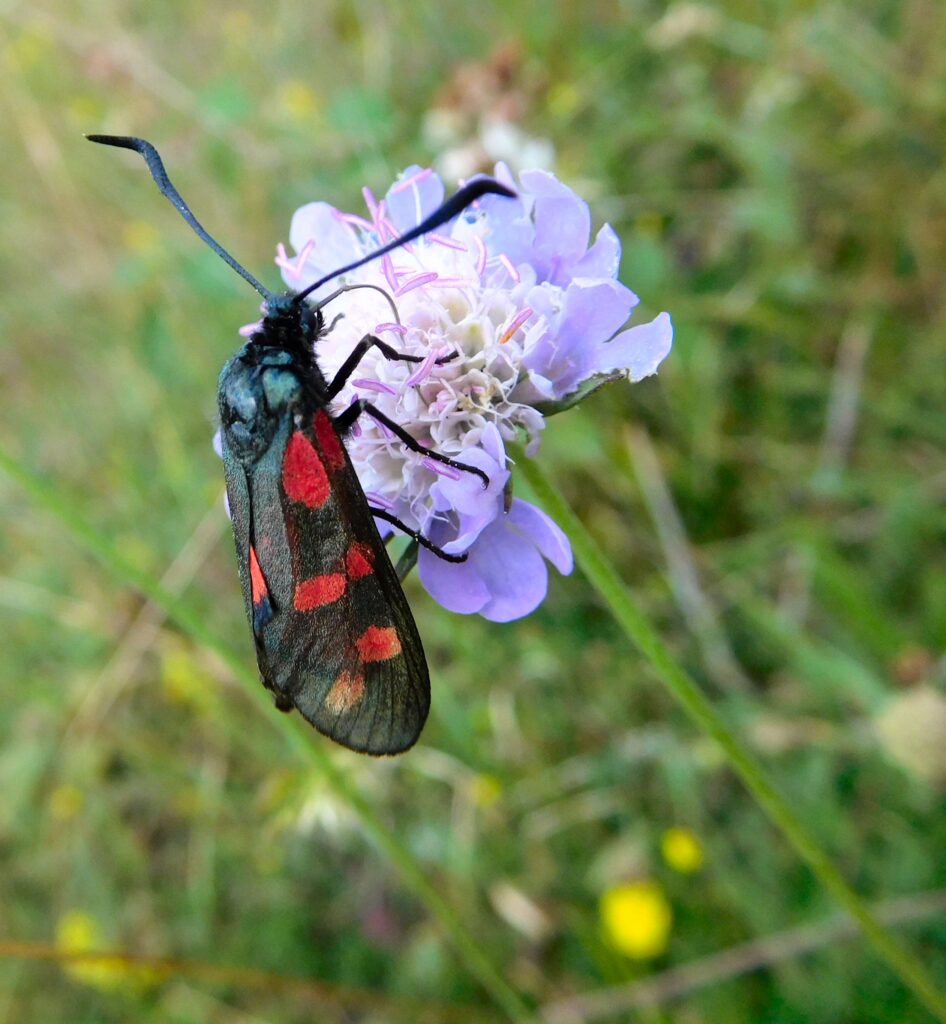
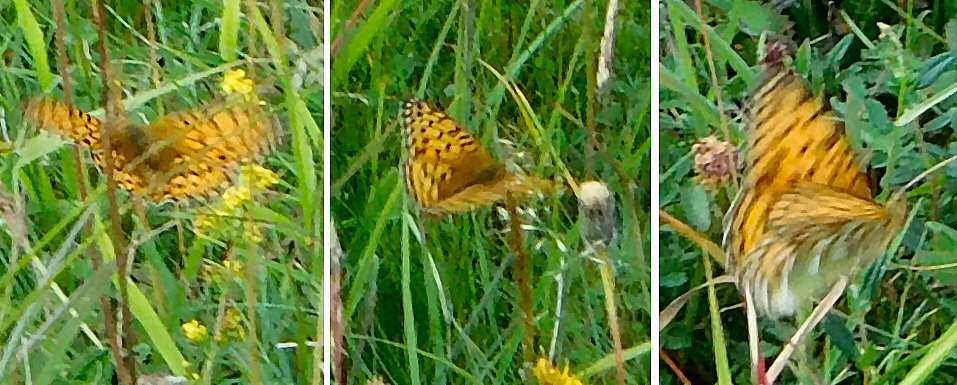
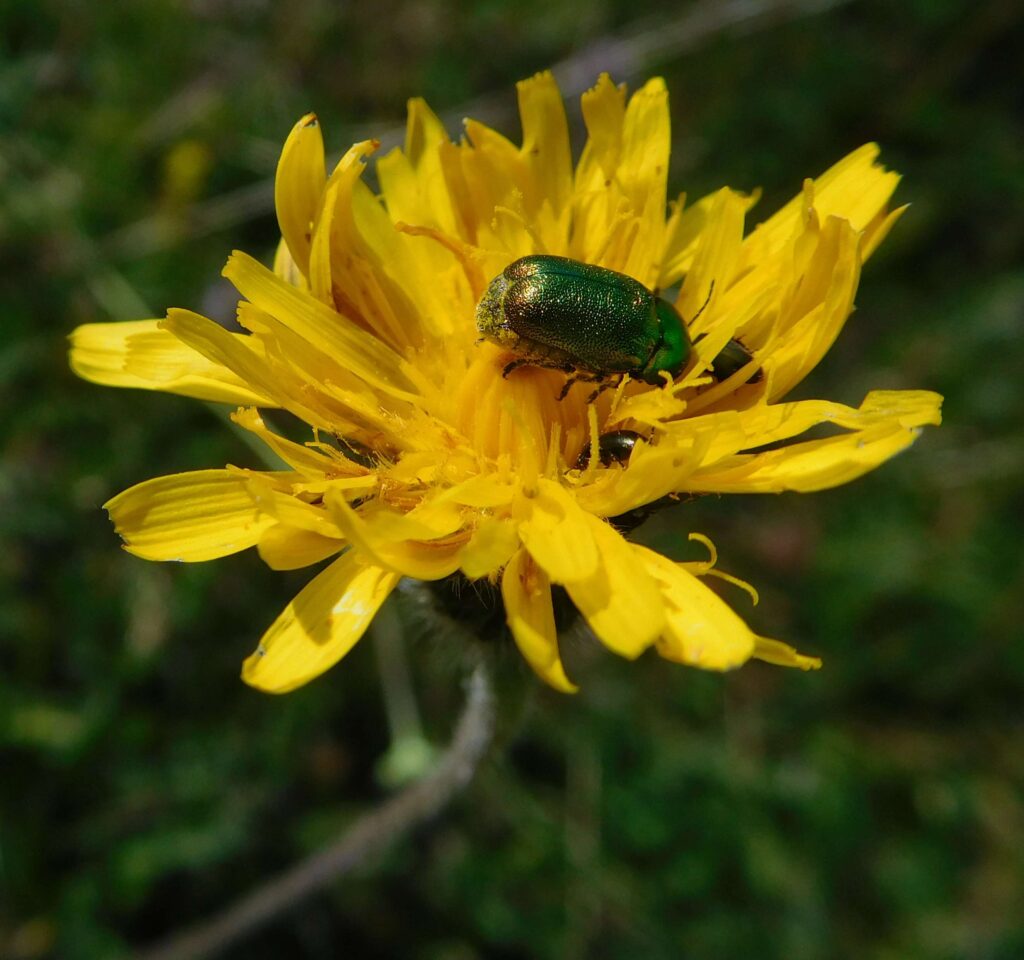
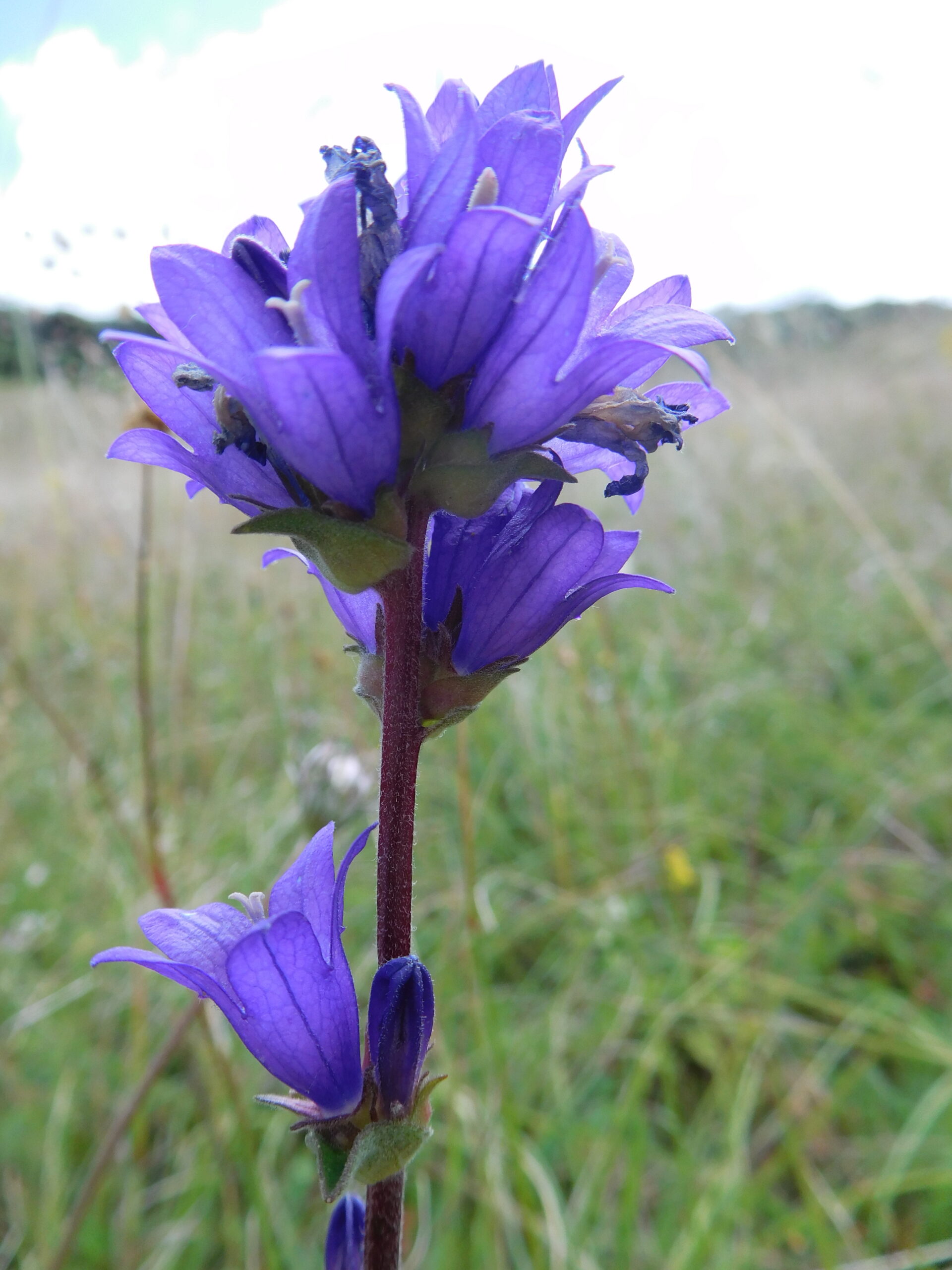
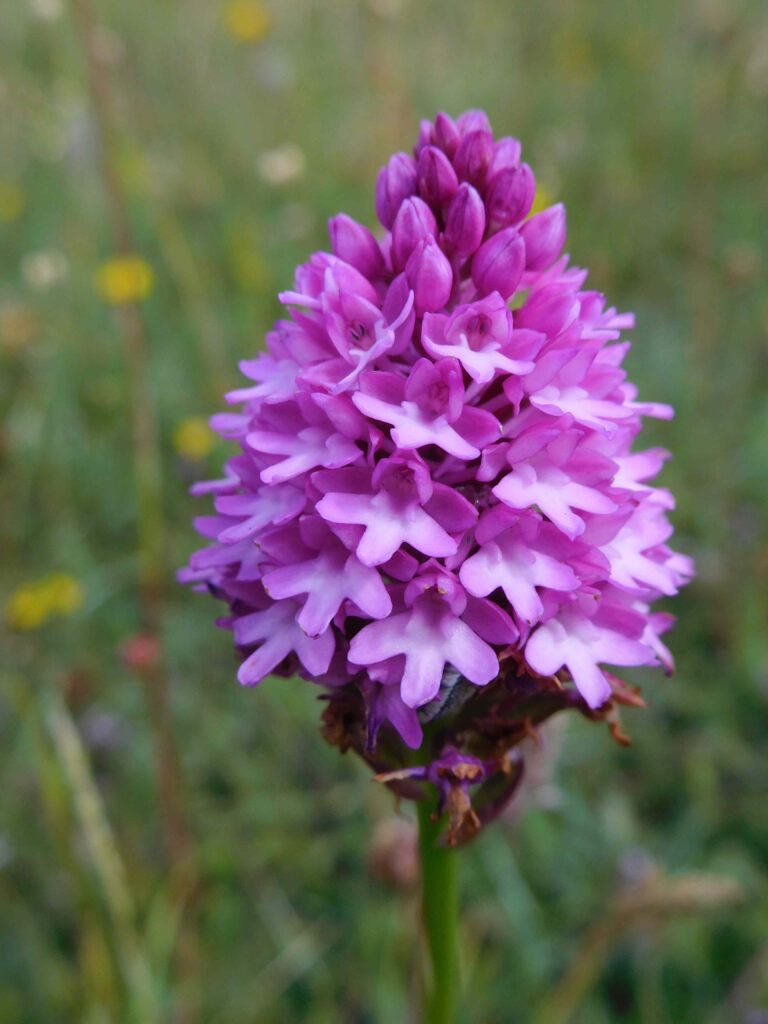
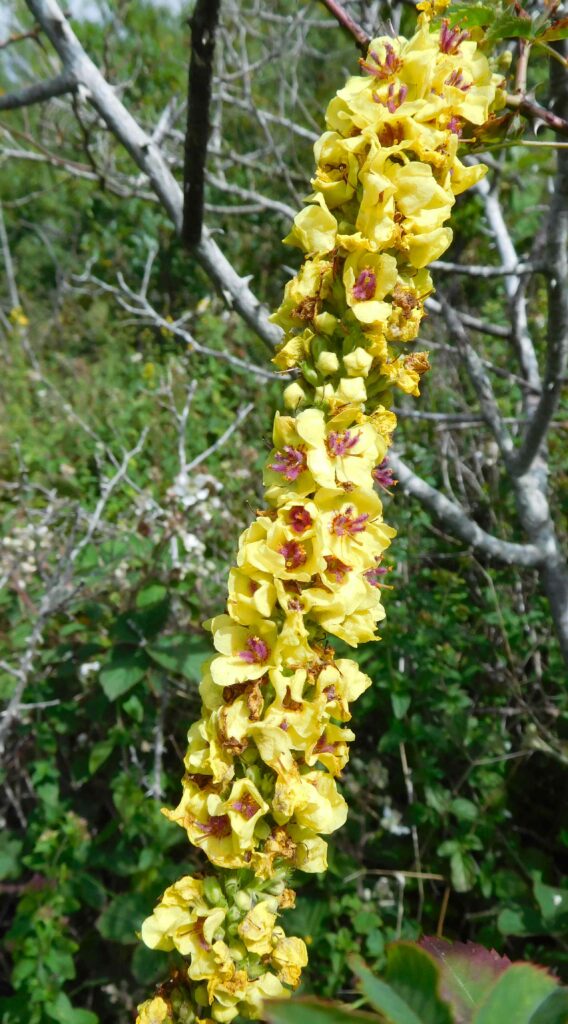
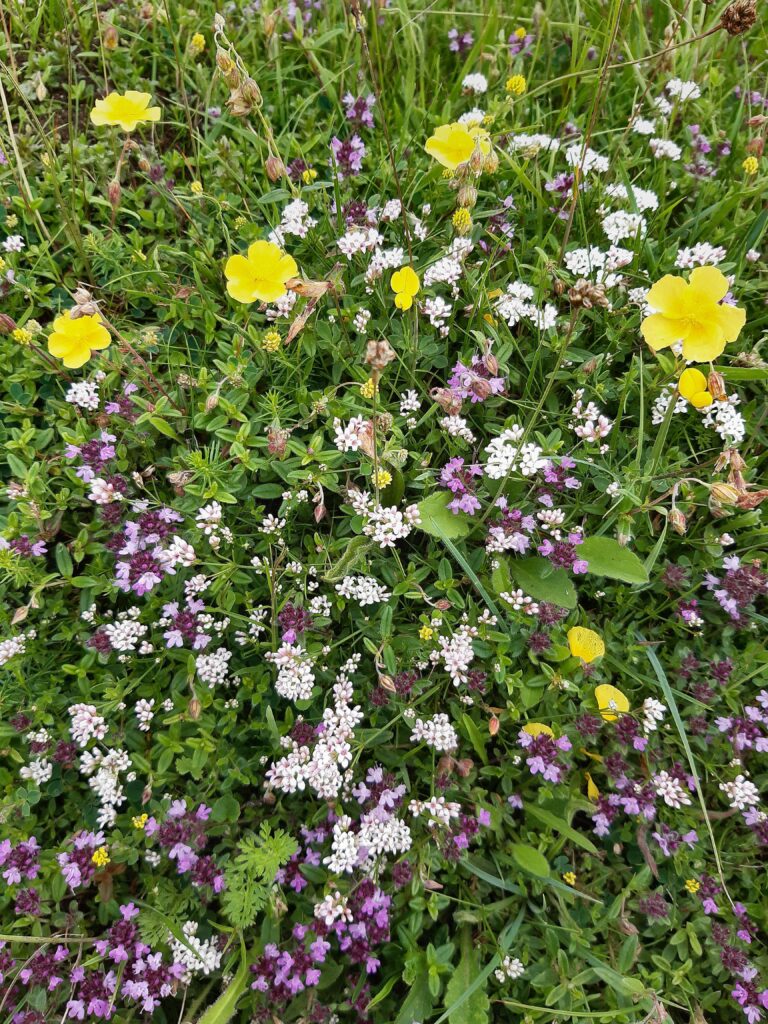
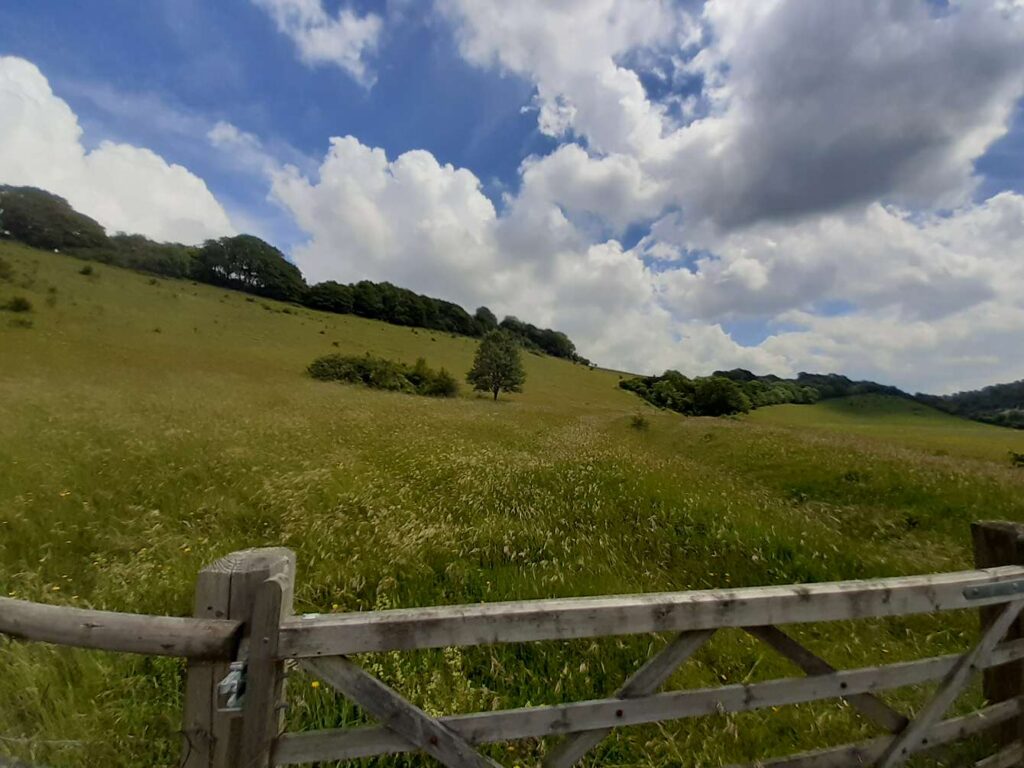
Well, this strange year – a cold dry April when the bees could hardly feed for lack of pollen and nectar; the wettest May anyone can remember; and now a June so late that cherries, raspberries and redcurrants are ripening all together. In some recent years, the end of June would have been too late for many flowers, specially on Aston Rowant’s steep, free-draining Chalk Grassland.
But not this year: it’s like Tolkien’s The Shire after Sam Gamgee has returned victorious and sprinkled the magic grains of earth from Galadriel’s Elvish Garden in all his favourite spots, and everything is glorious with colour, buzzing with bumblebees, and glittering with iridescent green Forester Moths, Thick-Kneed Flower Beetles, and astonishingly shiny Hawkweed Leaf Beetles.
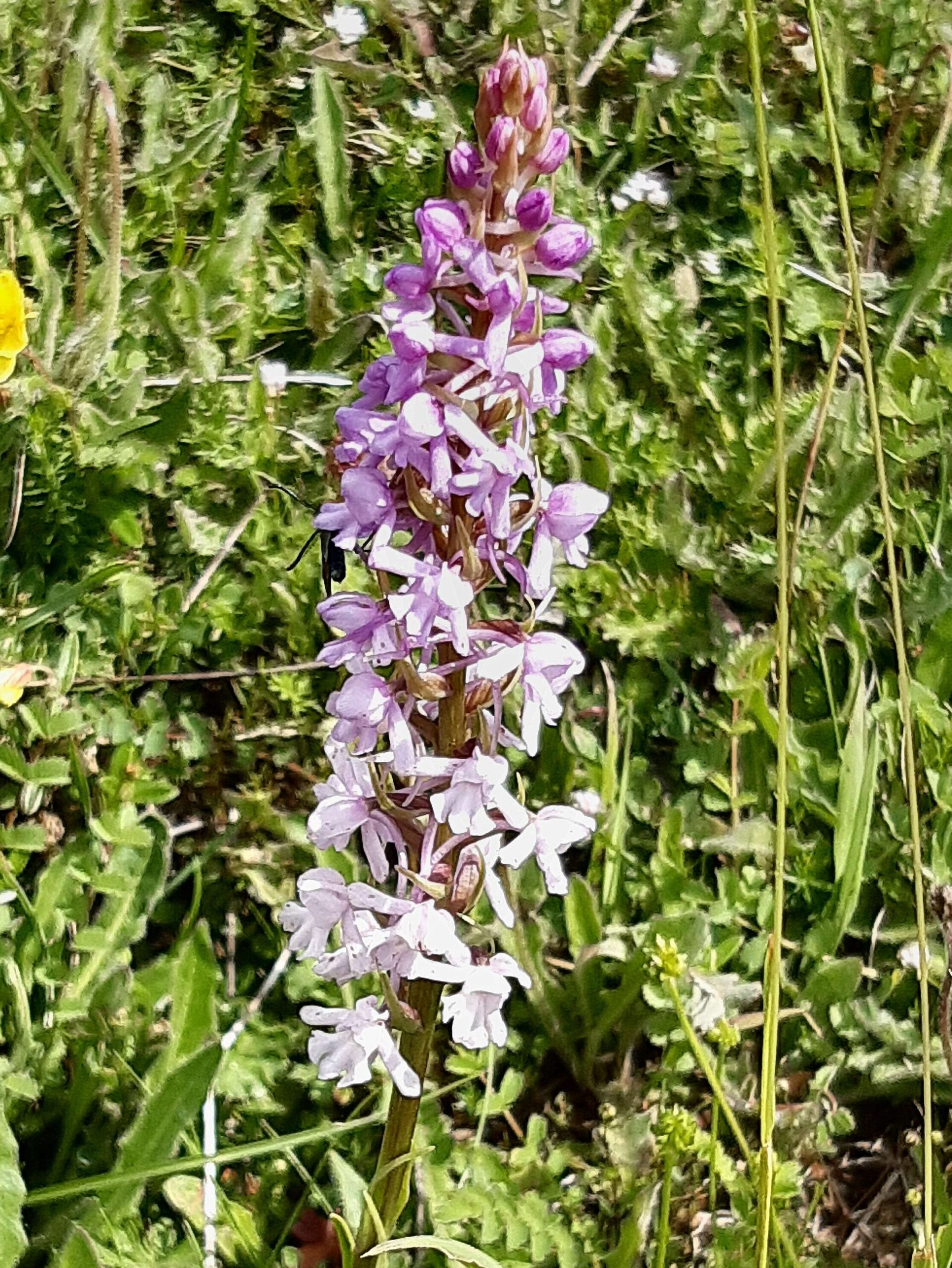
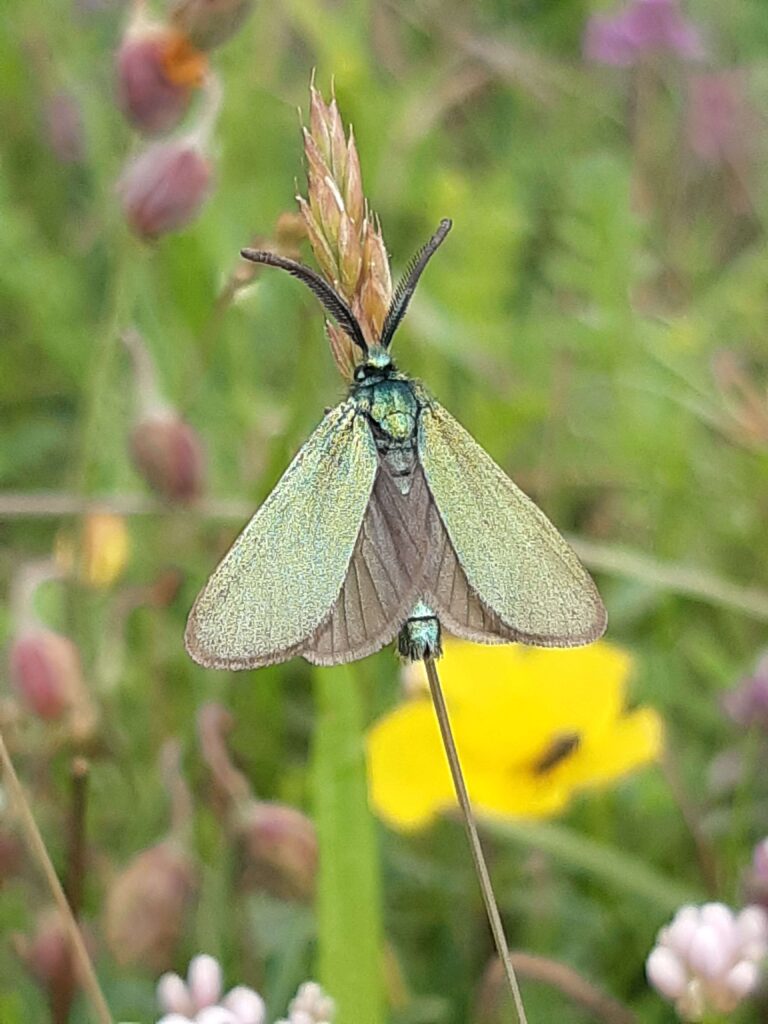
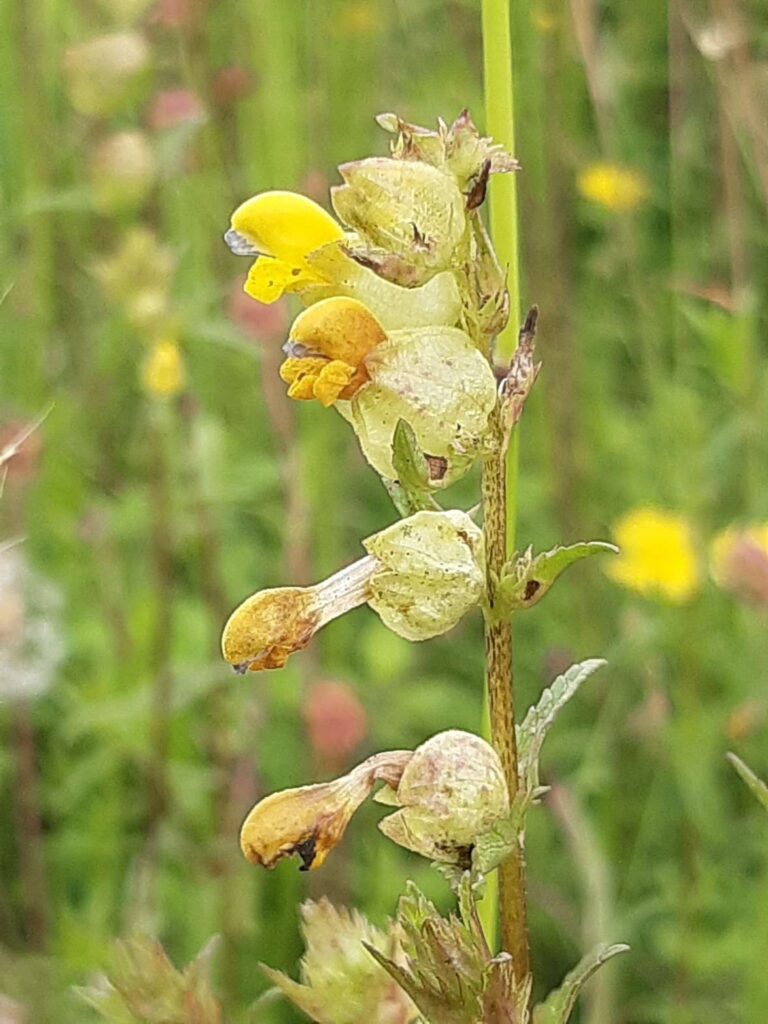
This curious little flower in the Broomrape family, Yellow Rattle, may seem to be just an oddly-shaped herb; but it’s critically important to the flowery meadow ecosystem. It doesn’t have much in the way of green leaves, as it’s a parasite: its roots attach to nearby grasses, extracting the food it needs to live, and in the process weakening the grasses all around it. Result? Tall tough grasses that would otherwise crowd out and overwhelm their attractively coloured neighbours are suppressed, and a wealth of insect-pollinated flowers can, well, flourish. That doesn’t mean the area can just be left to look after itself: Hawthorn and other shrubs would quickly take over and turn the place into forest, so carefully-planned grazing is necessary to keep the land at the meadow stage. It’s called Rattle, by the way, because the ripe seeds dry out and rattle inside the leafy fruit capsules when the plant is shaken.
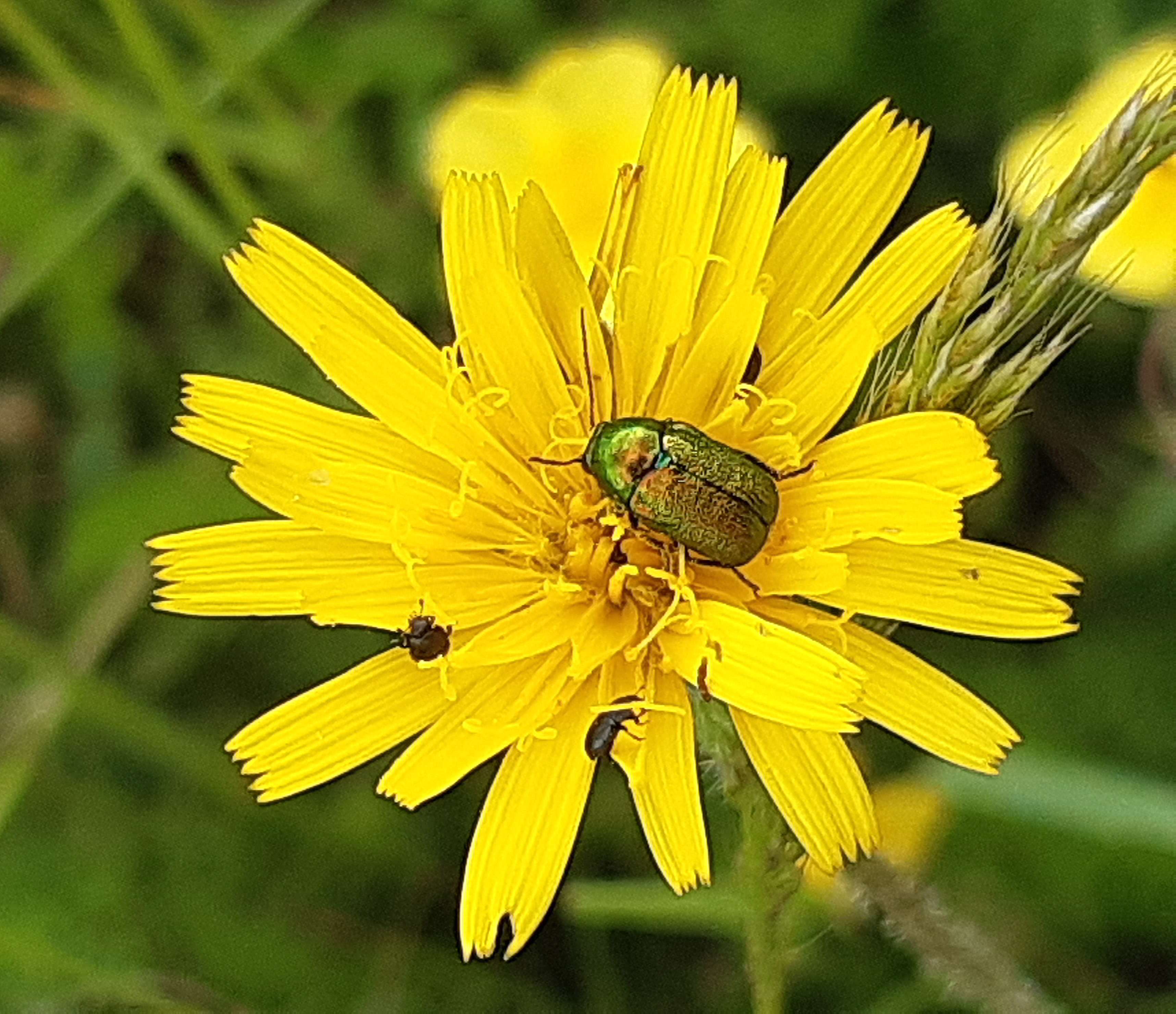
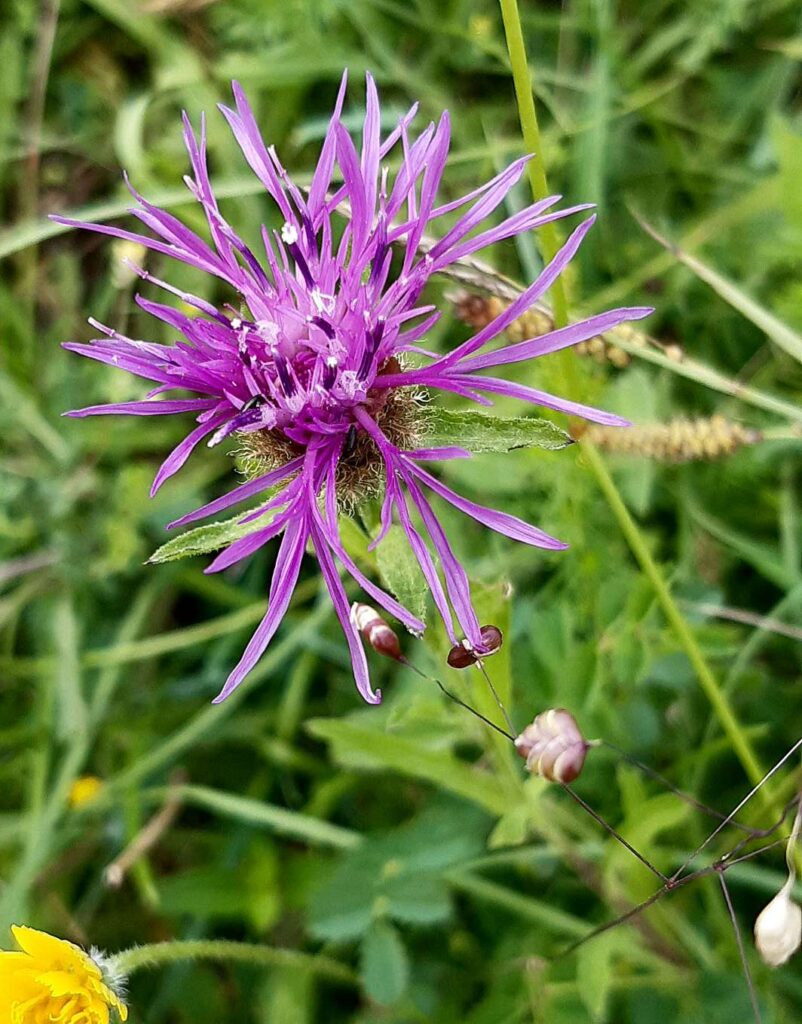
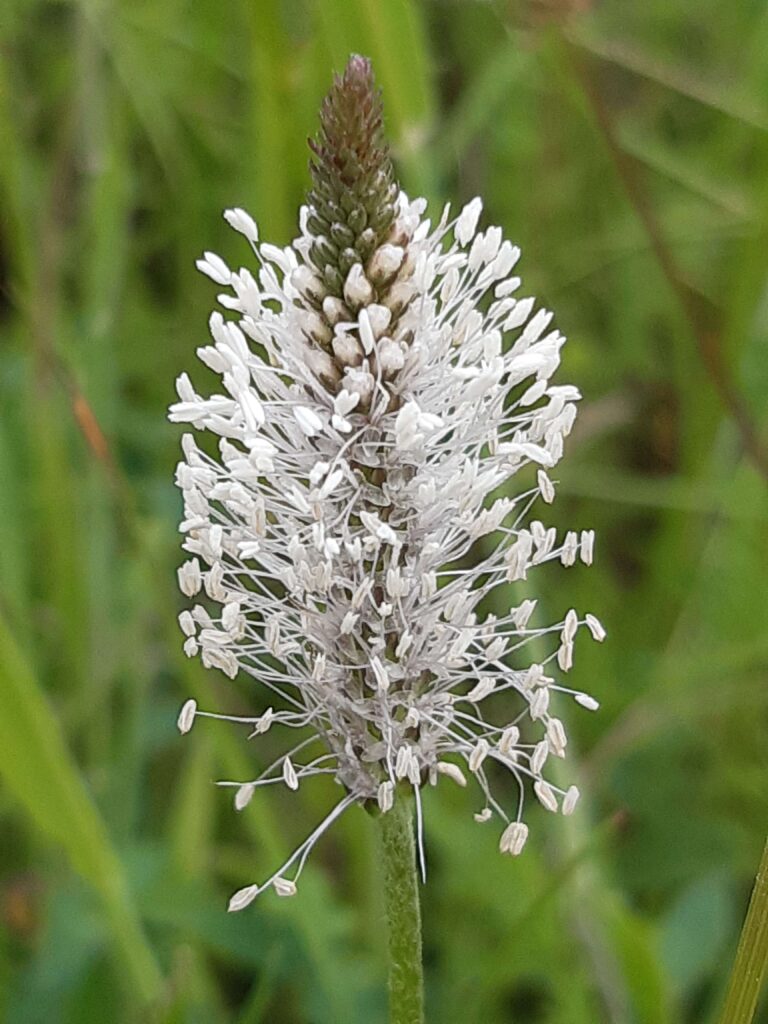
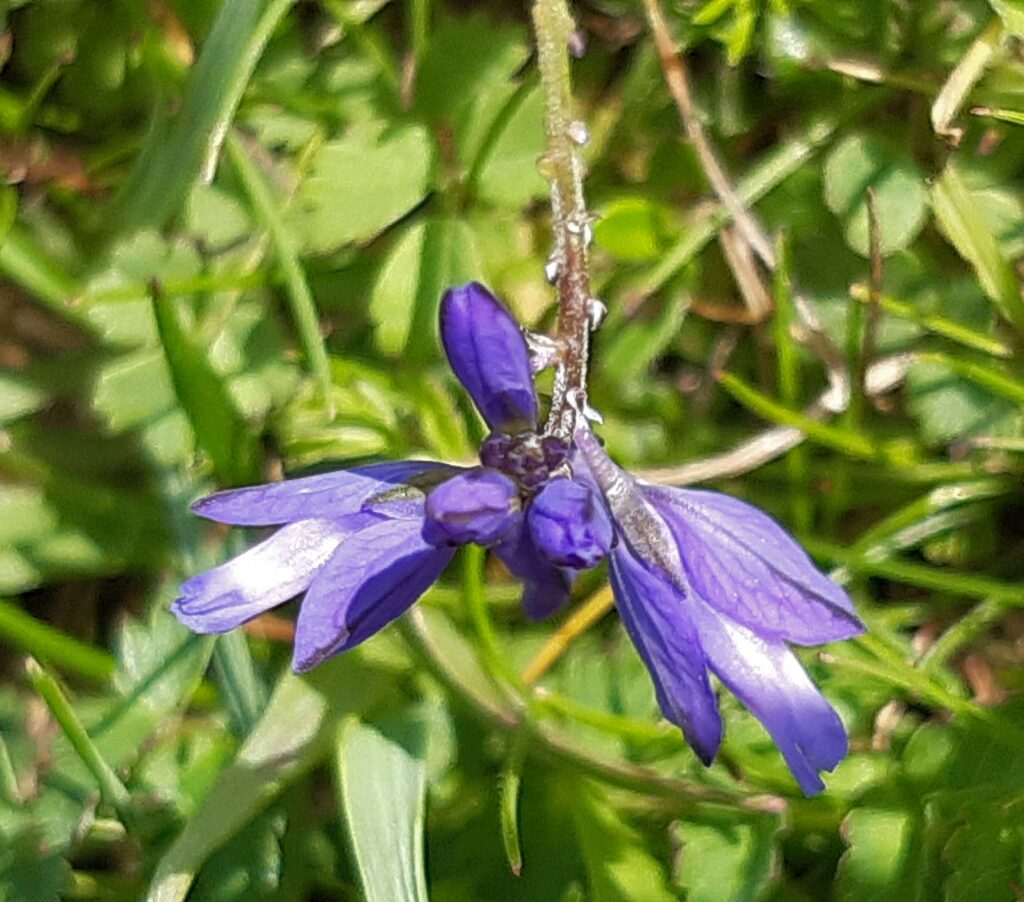
This small flower was once common in meadows, indeed its name tells its story: it was found wherever milk cattle grazed, in all Britain’s meadows. Now in lowland Britain at least, it’s a rare and special sight, and we feel excited and happy to see it: such is the scale of the catastrophe that has overtaken our countryside. Basically, the flowers are almost all gone; so are the insects; and the birds are fast following them. A place like Aston Rowant is indeed special: its warm, south-facing chalk slopes really were always a wonderful place for flowers like the Chiltern Gentian and butterflies like the Adonis Blue, and happily it still is; but it’s now special just for being what our grandparents would have seen as ordinary: it’s full of what they knew as common wild flowers “of wayside and woodland”.
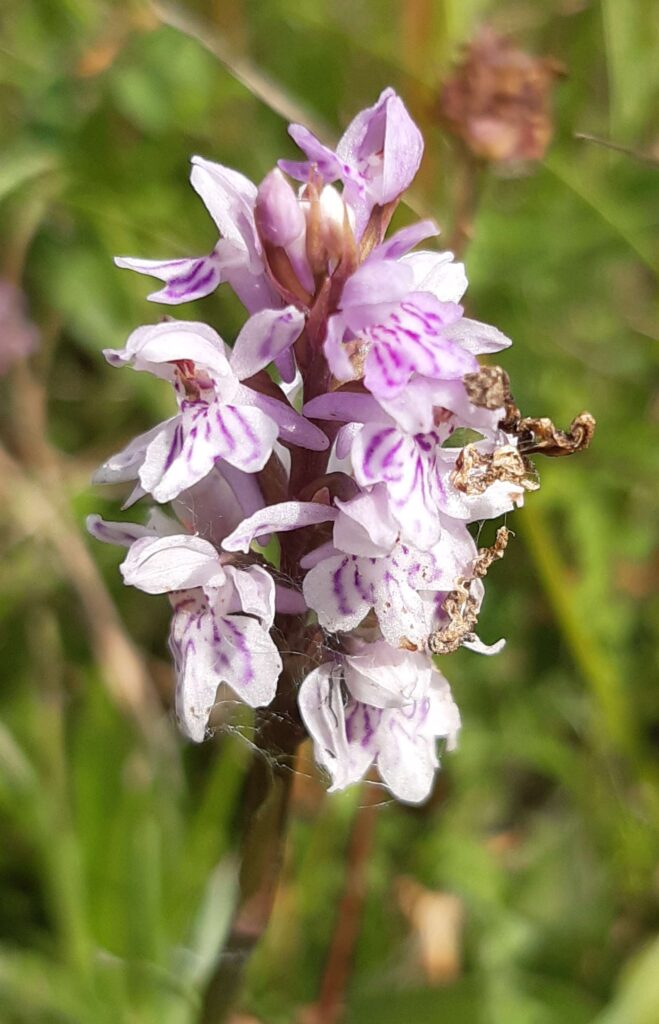
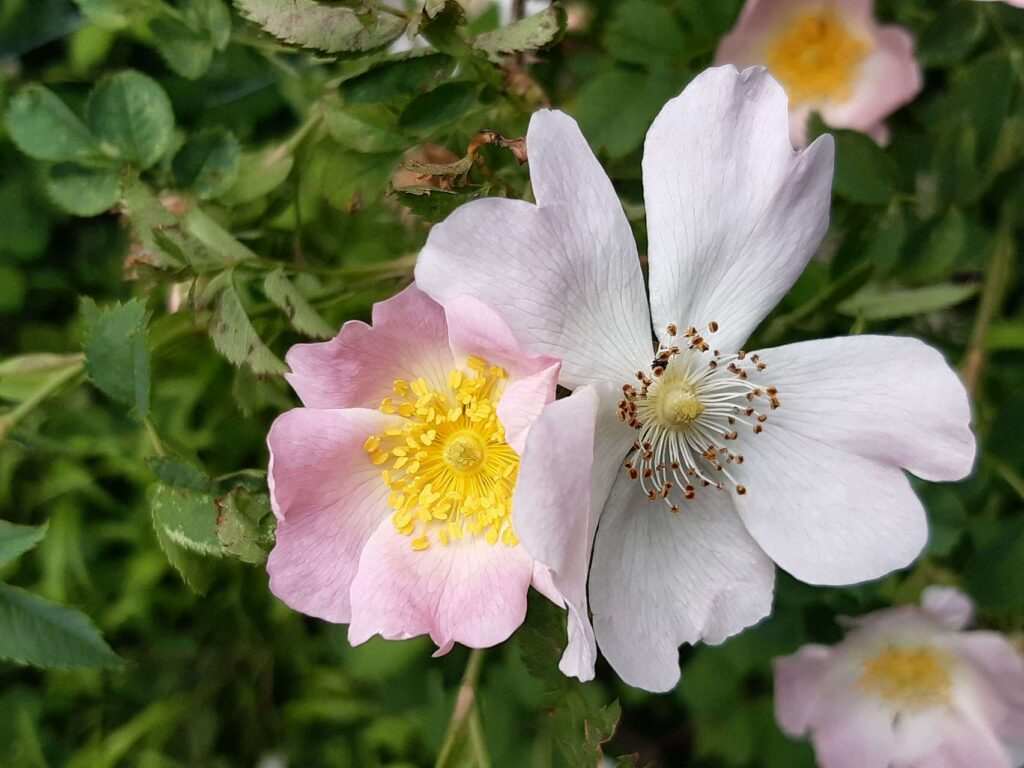
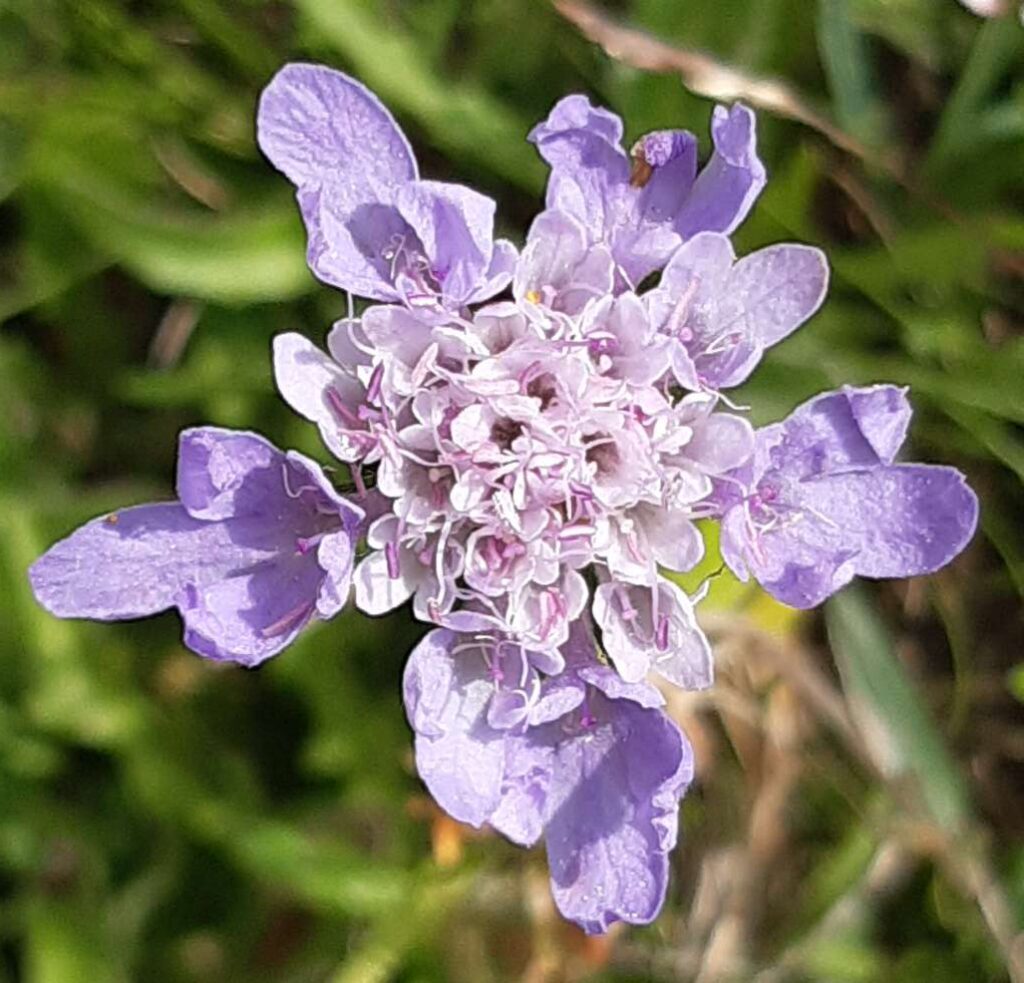
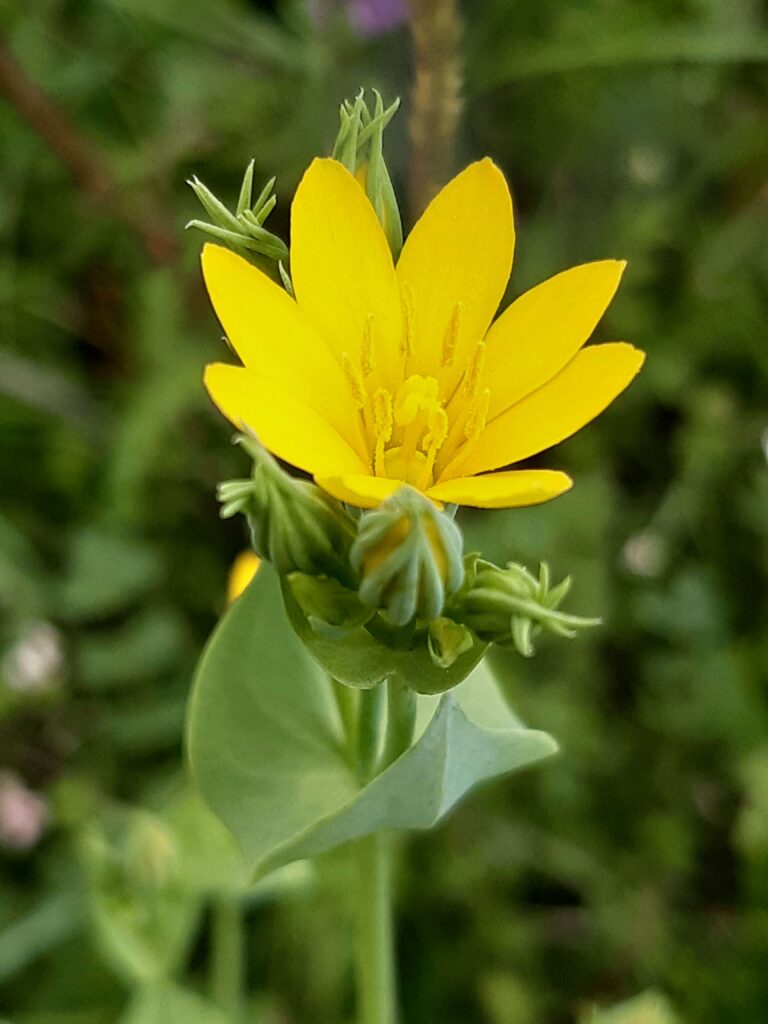
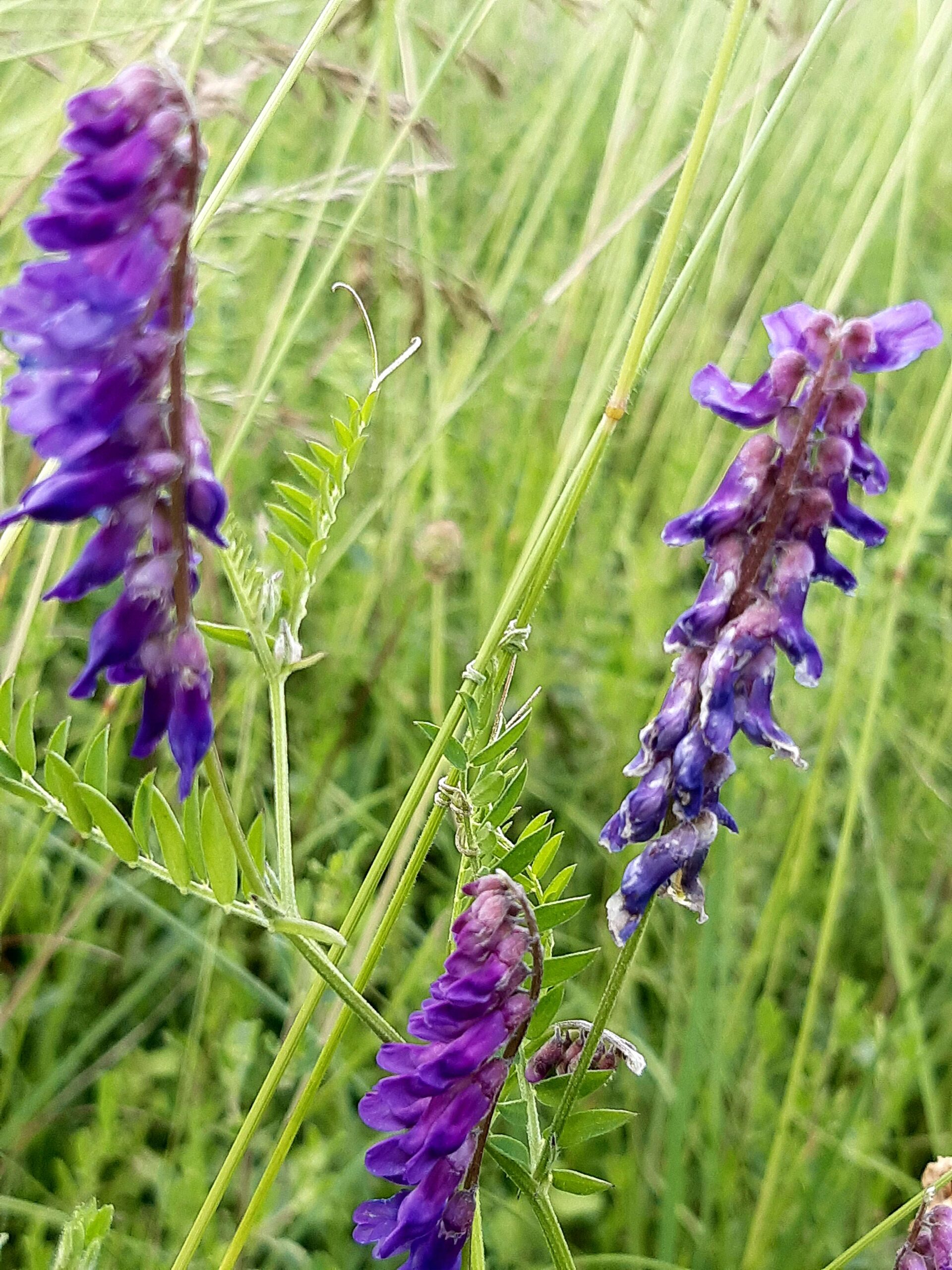
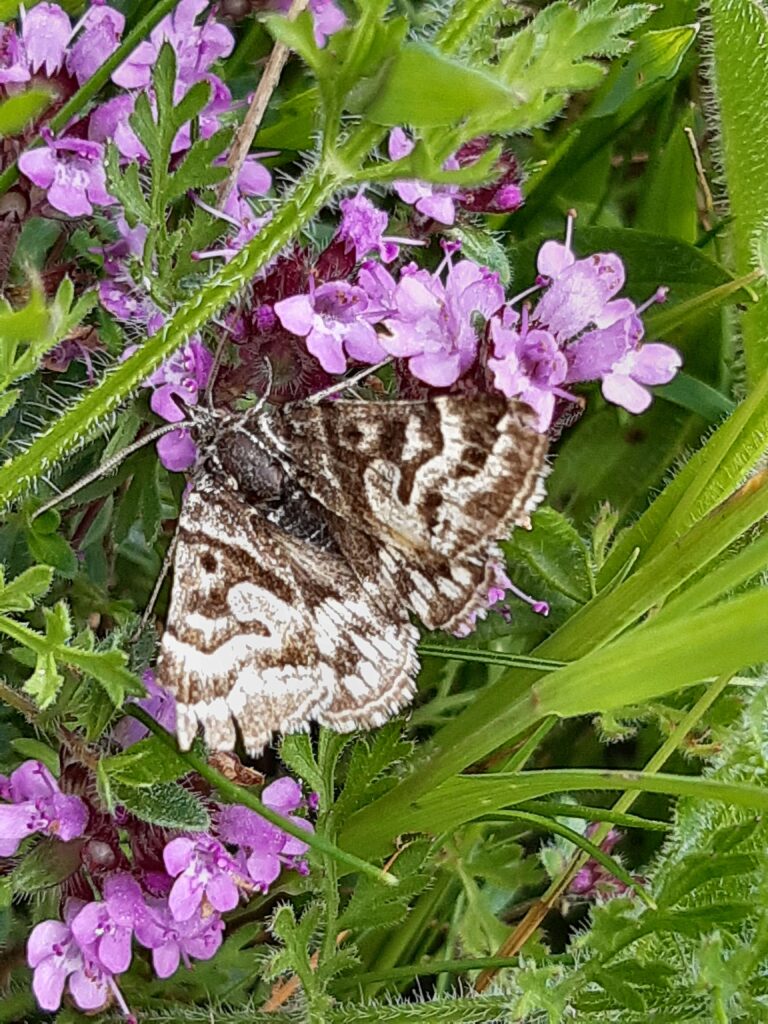
There weren’t many butterflies about – Meadow Browns, Common Blues, a single Marbled White very handsome with its dancing flight, a good number of Small Heaths up on the hilltop, a Red Admiral. It looks as if the difficult spring has meant low butterfly numbers this year.
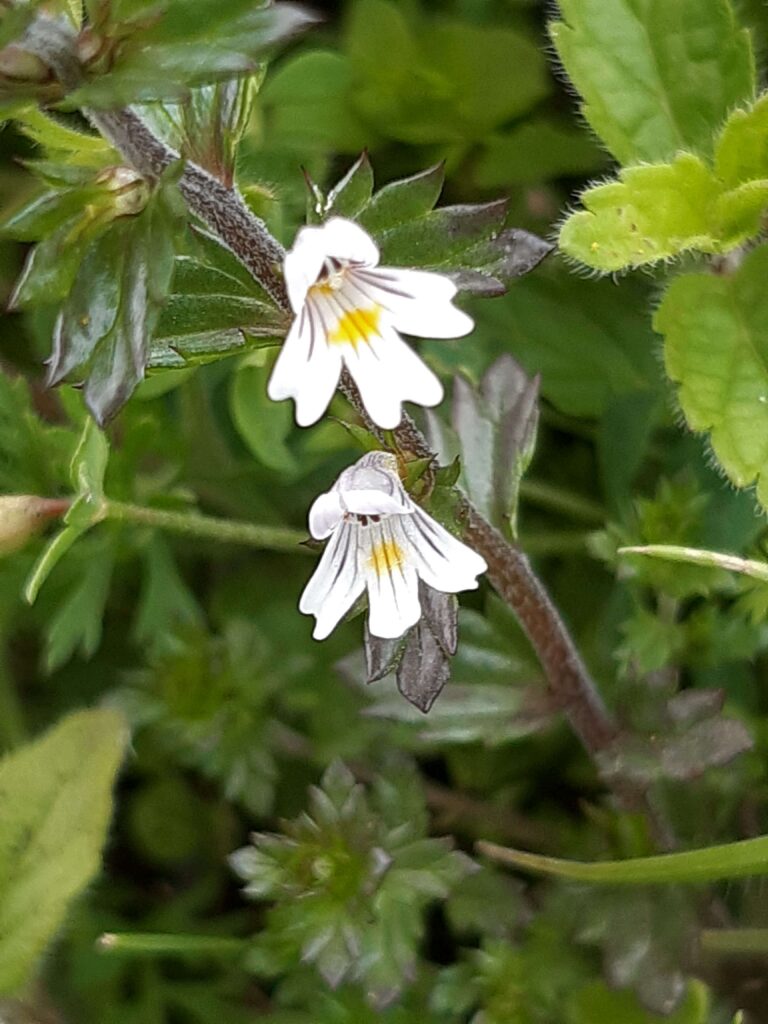
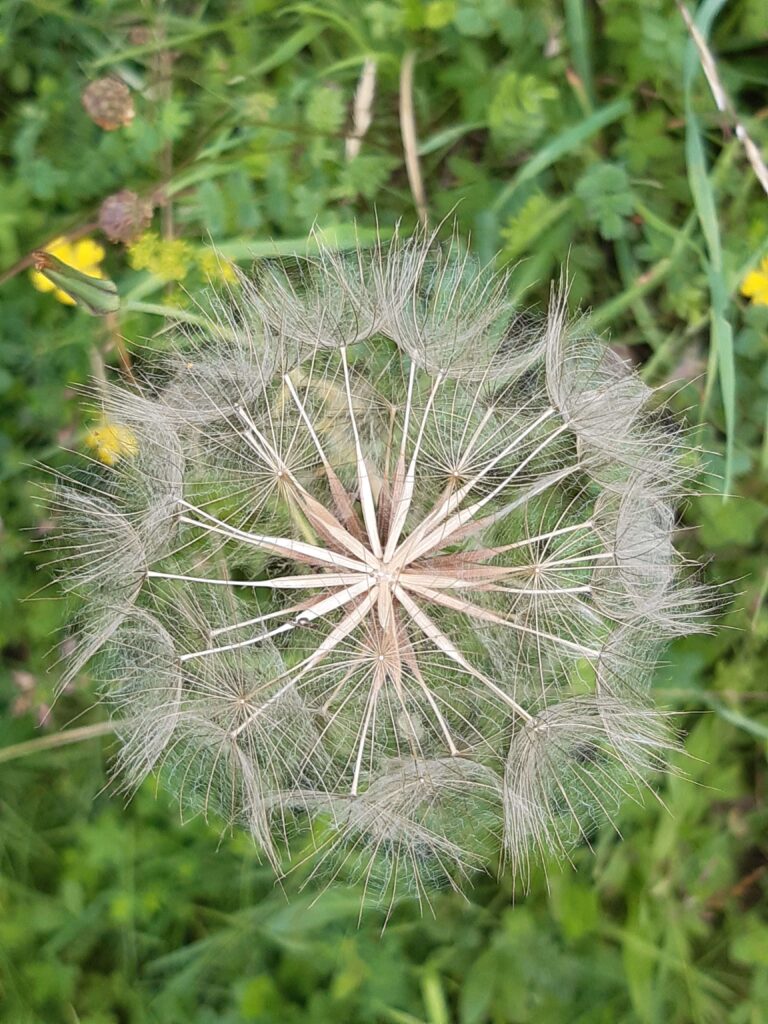
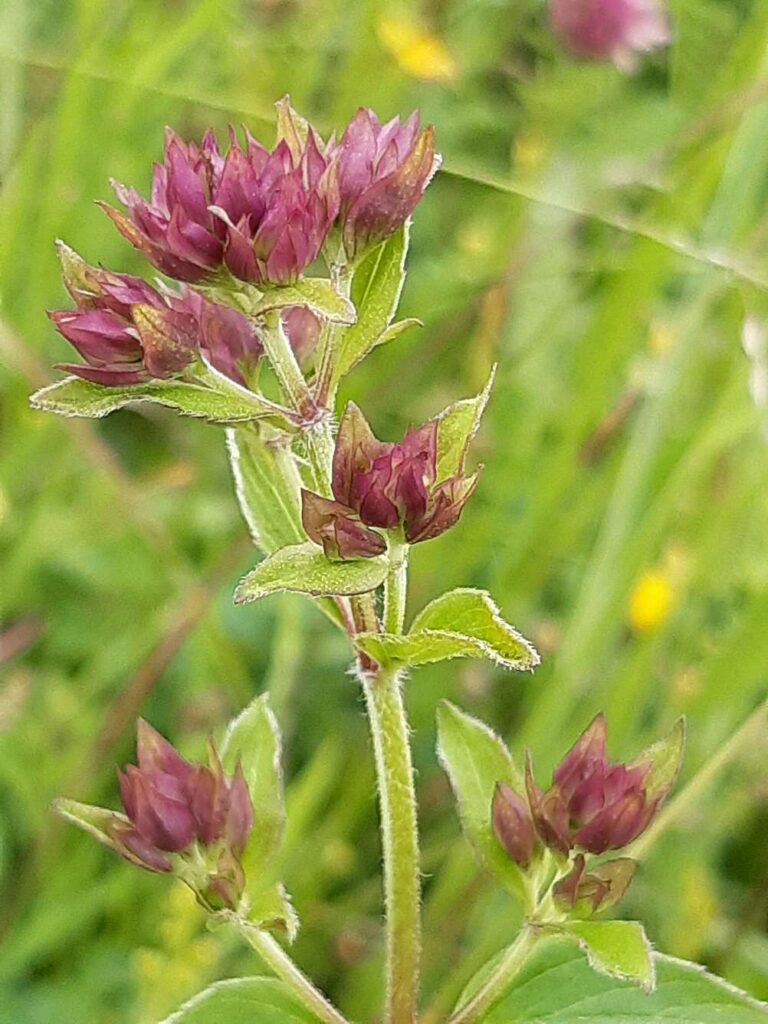
My 2014 blog on Aston Rowant, with a different selection of species (and some trenchant thoughts): http://www.obsessedbynature.com/blog/2014/06/18/aston-rowant-beautiful-brutalized/
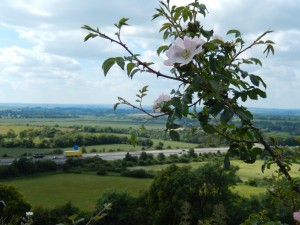
Aston Rowant National Nature Reserve is on the scarp of the Chiltern Hills, between Watlington and Chinnor. That places it at the western edge of the relatively hard rock of the Cretaceous period – Chalk – overlooking the softer rocks of the Jurassic period – the Oxford Clay. It has some fine chalk grassland, once a widespread habitat, though most has been lost to the plough, woodland, or development. And it has a rushing noisy motorway right through its middle, complete with a deep cutting hacked through the chalk escarpment. Here’s a short video clip to give you the general idea.
I visited in hope of seeing some orchids, and was delighted to find not only Pyramidal Orchid and Bee Orchid, but some seemingly hybrid plants with a few looking very close to ‘Wasp Orchid’, a variety of the Bee Orchid species.
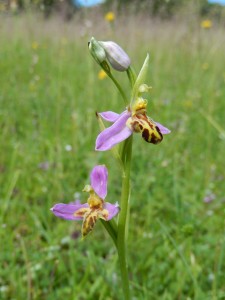
The site is carefully managed by English Nature to conserve the plants and animals of this special habitat. They employ a team of 24-hour all-terrain woolly mowing machines to keep the grass sward properly short for the more delicate flowers, such as the orchids, the Cistus rock rose, the delicately aromatic tufts of wild thyme, the eyebright, salad burnet, and many others.

The flowers in turn support a wealth of bees, butterflies including (those that I saw) Meadow Brown, Small Heath, Marbled White, Speckled Wood, Brimstone, Adonis Blue and Small Tortoiseshell, as well as day-flying moths like the Cistus Forester and the Six-Spot Burnet.
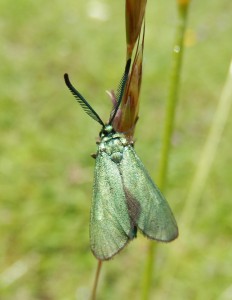
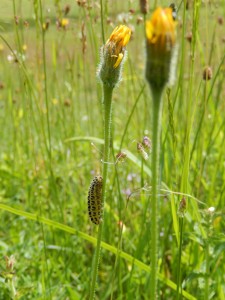
The delightful grassland is scored by ancient trackways, and the pre-Roman Ridgeway runs along the bottom (surprisingly) of the slope. Which brings us back to the modern trackway, its constant roar doing its best to drown out the bleating of the sheep and the screams of the red kites. The zizz of the grasshoppers is not lost entirely, but the quiet contemplation of them is certainly a little difficult.
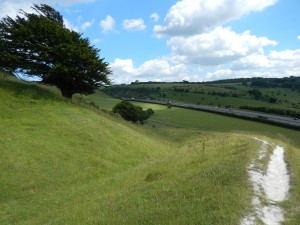
So, what are we conserving? Beautiful nature, ancient landscapes, specific habitats, individual species, an experience for the public, material for scientists to study? As the photograph shows, humans have cut trackways through the chalk for thousands of years: it’s just that somehow, an ancient trackway seems a little, well, quieter than the modern variety. The most obvious effect is on human visitors: the place isn’t quite the escape from modernity that it might be.
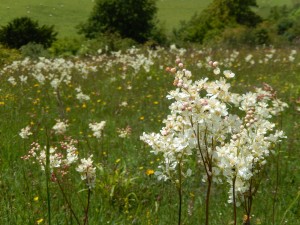
Beautiful but brutalized: perhaps meadowsweet waving in the breeze under the sunshine on the M40 is the perfect icon for the Britain of Cameron (and Blair before him). We need transport infrastructure, heaven knows, just as we need sufficient housing and everything else. And yet, a reserve where visitors can actually hear the birdsong (and record it if they want to) would be nice, even if the birds do manage to reproduce somehow. Are they affected? They easily might be. So what is a nature reserve for? If it’s a place where a teacher can bring a class and say ‘this is what the countryside was like x years ago’, then Aston Rowant fits part of the bill. Realistically, what do we want our world to be like? Just with one or two pretty bits to conserve the orchids, the cameras judiciously avoiding getting trucks in the background, the video having to dubbed with birdsong and grasshopper stridulation in the studio? Can we afford something more complete, given all the other pressures on the budget? Not easy to say, I think.
I had the good fortune to get down to West Wiltshire in hot if sometimes humid summer weather.
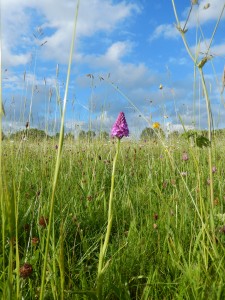
It was a pleasure to find the Pyramidal Orchid in a flowery meadow near a town: despite the dog-walkers, the increasingly uncommon flowers were clearly spreading from a small patch across the meadow, which is mown annually.
Less pleasantly, there were next to no insects pollinating the flowers: we saw one Small Tortoiseshell, a fly or two, and one (white/buff-tailed) bumblebee. It was a stark contrast to the masses of bees and beetles I’ve seen on the reserve in London. Of course, in London there is now very little use of pesticides, and basically none on an industrial scale.
This year (2014) does seem to be particularly poor for butterflies. It was an extremely warm winter and a very wet and windy spring, so I wonder if the result has not been a bad spring for insect pests … and perhaps, whether England’s farmers have not sprayed insecticide especially heavily? It’s a question that could clearly be answered by someone. If the answer is yes, then our ‘useful insects’ have suffered very heavily as a consequence.
The next day we went to Cley Hill, a western outlier of the Salisbury Plain chalk downs, sticking up above the plain below the chalk escarpment.
In the short grass, full of lovely flowers – Sainfoin, Milkwort, Horseshoe Vetch – were Bee Orchids, and happily both bumblebees in this special place protected by the National Trust and Burnet Moths – mostly Five-Spot Burnet, with some Transparent Burnet too, quite a treat.
On the top of the hill, above the Iron Age earthworks, we came across a group of about five Wall Brown butterflies, all very tatty and worn: perhaps they had been blown across the Channel from France on the warm southerly wind that is accompanying this anticyclone (centred to the east). Nearby were a few Brown Argus, small butterflies in the Blue family: not uncommon in France, far from common in England. Their coloration may seem odd for the Blue family, but females of quite a few species are brown, contrasting with their bright blue males, so the genes for ‘brown’ are clearly available: perhaps it takes just one or a few genetic switches to turn on brownness in both sexes rather than in just one.
In several places on the hill, often on bare chalk paths or short grass, we saw the glowing blue and purplish blue of Adonis Blue butterflies, with their chequered wing borders. So we saw some rather special butterflies, though with the definite feeling that they are only just hanging on in the area.
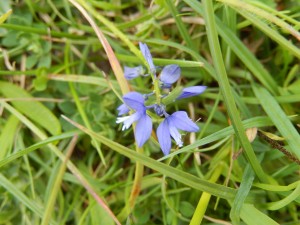
The hill is also host to Chalk Fragrant Orchid, Pyramidal Orchid, Spotted Orchid and more: it was lovely to see them all, though we were moved on swiftly by an anxious pair of Skylarks circling rather low overhead, trying to get back down to their nest, clearly not far from where we were sitting. All around in the thorn bushes were Tree Pipits, singing away, with some twittering Goldfinches and one Yellowhammer, my first of the year: yet another species that was once commonplace in every hedge.